Hordern Park Palm Beach: some history
Hordern Park became the site of the Palm Beach SLSC 'shed' for a surf boat and a place for members to rest, and ostensibly the clubhouse during those first few years of the 1921 formed Palm Beach Surf Life Saving Club, a place for picnics, where generations of seagulls have bathed in the freshwater creek runoff onto the sand, and latterly, the place where Johnny Carters Swim school 'watermelon fights' took place at the end of each Summer Swim Season.
What we today call 'Hordern Park' was first sighted by Europeans in 1788 according to a sign dedication and named for one of the plants found growing in both Hordern and Wilshire parks still - the beautiful Cabbage-tree Palm.
The southern end of the Palm Beach is marked as 'Cabbage Tree Boat Harbour' on a map of 1832. Palm Beach was later named after these Cabbage Tree palms Livistona australis that are still present at Cabbage Tree Boat Harbour Palm Beach and at Bilgola Beach. The plant's species name also gave its name to Livistona Lane, off Palm Beach Road.
Sign in Hordern Park, Palm Beach
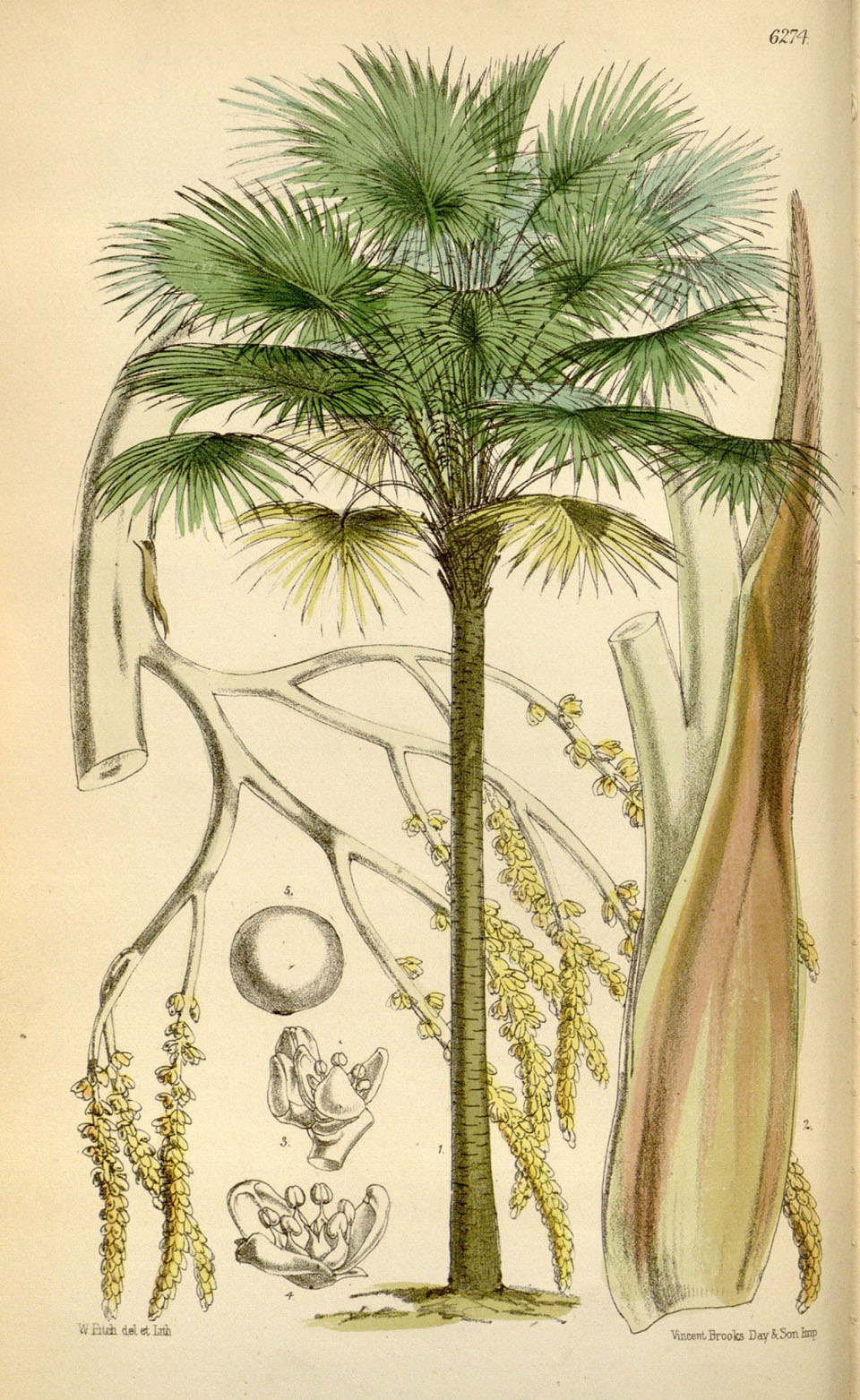
Cabbage tree palm (Livistona australis), 1877- (from Curtis's Botanical Magazine, Vol 103, no 6274 (1877))
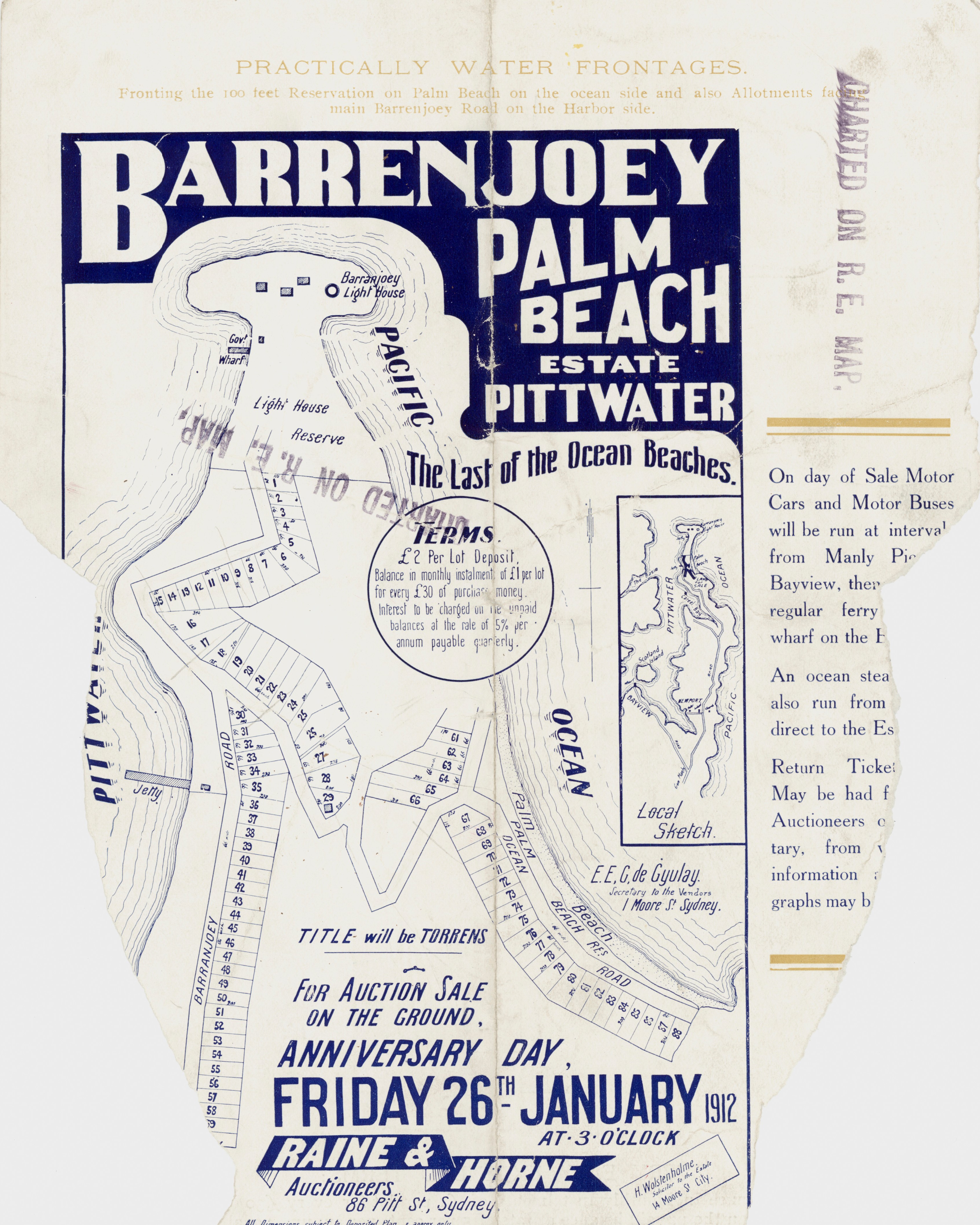
Barrenjoey - Palm Beach Estate - Pittwater - Barranjoey Rd 1912 - part of brochure. Item: c052700024, courtesy State Library of NSW - showing ocean front reserve
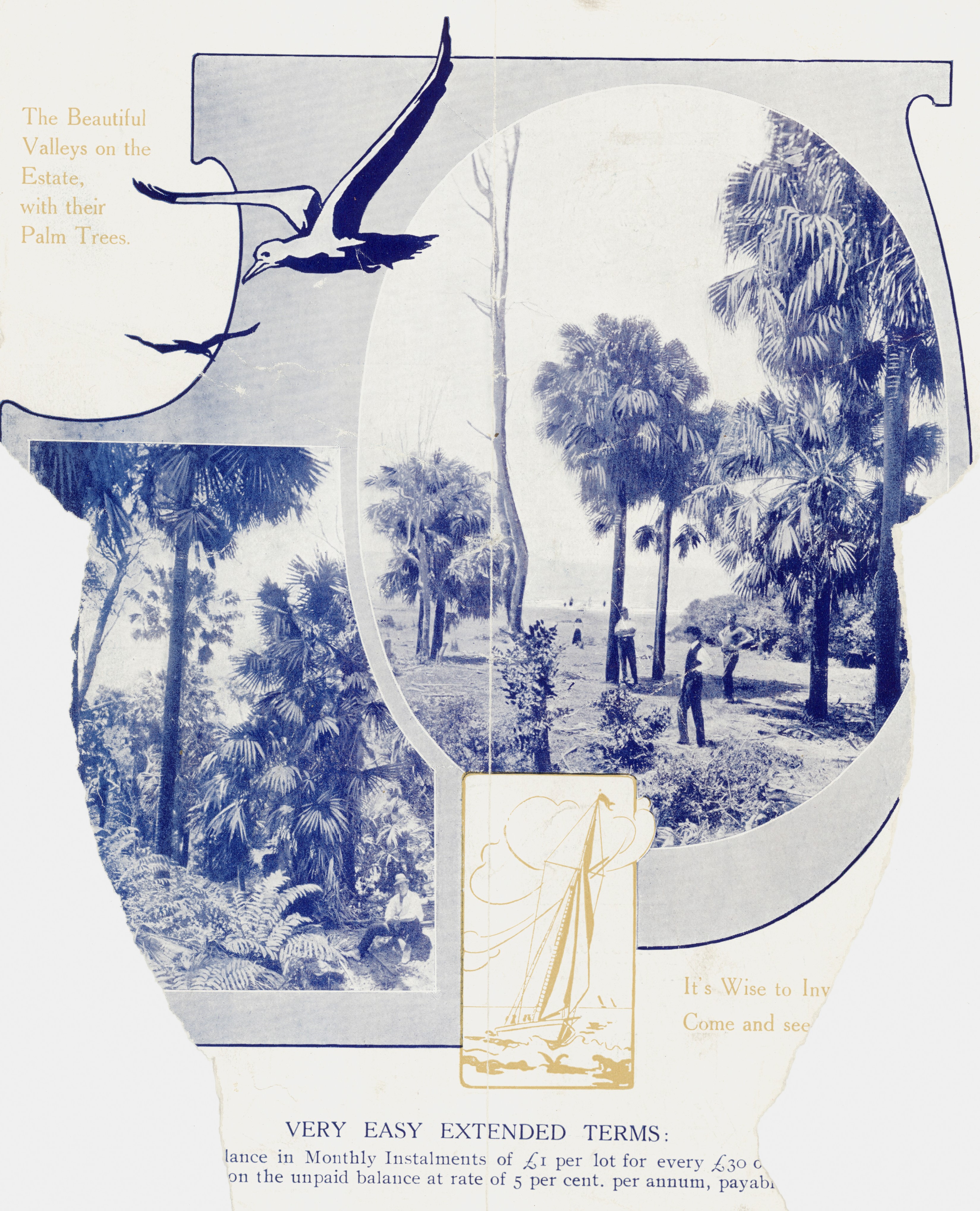
Barrenjoey - Palm Beach Estate - Pittwater - Barranjoey Rd 1912 - part of brochure. Item: c052700025, courtesy State Library of NSW
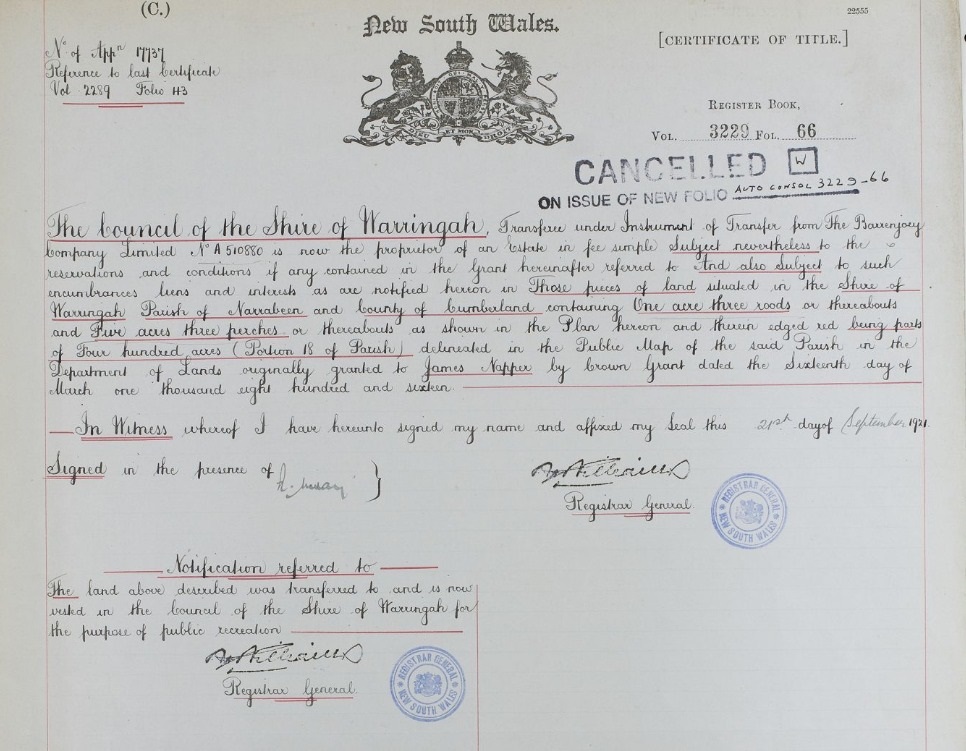
%20Palm%20Beach%20front.jpg?timestamp=1655245854098)
%20Palm%20Beach%20front.jpg?timestamp=1655245877060)
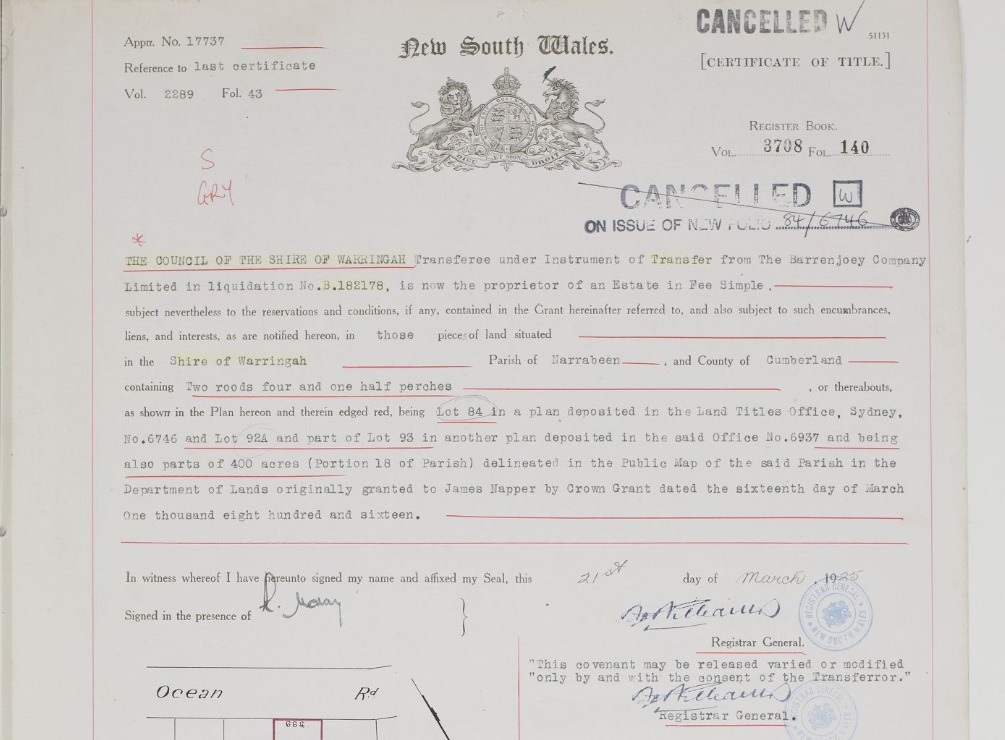
%20Wilshire%20Park.jpg?timestamp=1655245925949)
.jpg?timestamp=1674187063233)
.jpg?timestamp=1674187093922)
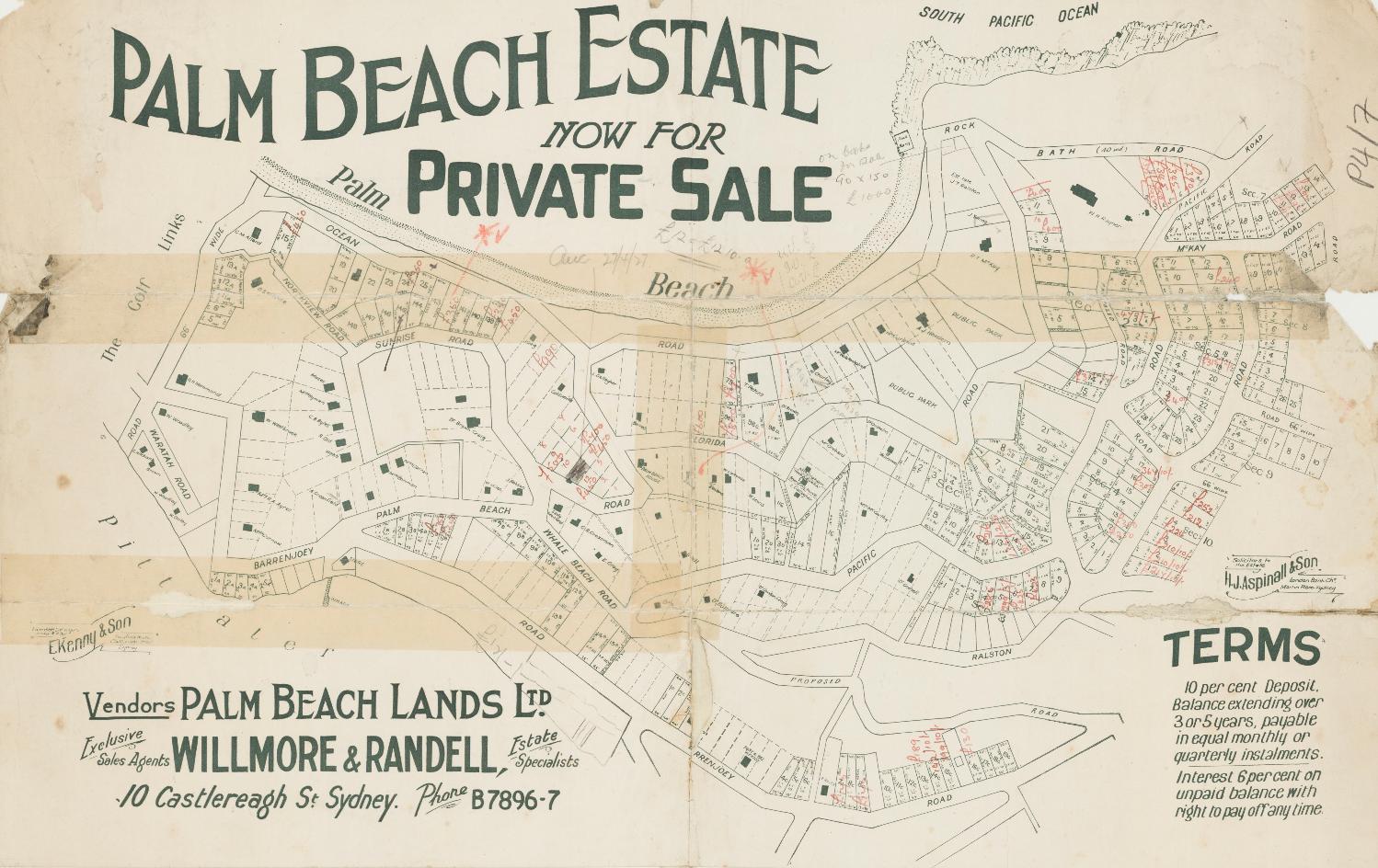
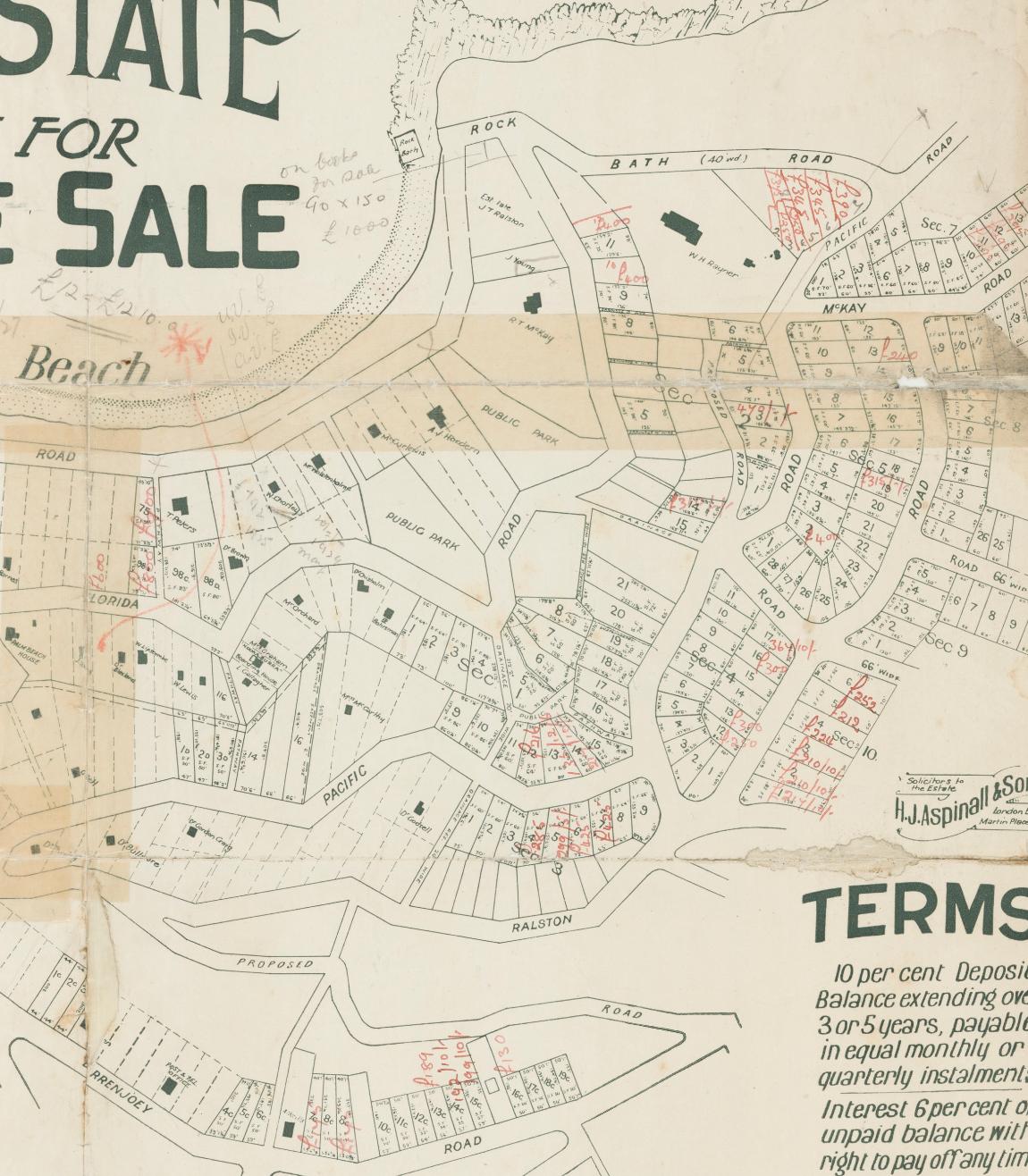
October 19, 1925 Meeting records
Resolved, ; (Crs; Hewitt, Hitchcock) That with regard to the proposed notices to be erected on Palm Grove, Palm Beach, the Notice suggested by the Clerk be approved, and a letter be sent to Mr. Hordern thanking him for his offers, as contained in the Works' Committee's report. Resolved.(Crs. Hitchcock, Hewitt) That a notice be erected at the end of Ocean Road, near the rockbath prohibiting the parking of cars on the road.
The December 6, 1926 Meeting records:
A letter from A. J. Hordern, offering £10 towards stopping the leak in Palm Beach Rock Bath, and clearing, out the stones, provided the work be completed by November 1st. Resolved, - Contrib-
A. J. Hordern . 3.12.26. drawing attention to the fact that on account of the construction work going on in the vicinity of Gow's Store on the Barrenjoey Rod, vehicular access to Palm Beach is likely to be 'cut off during the Xmas holidays Left with the Engineer to do what he considers best.
OVERSEER WORKS FOR A. RIDING was read and dealt, with as follows :- 6-. Resolved, - (Crs. Simpson, Hitchcock) That £20 extra be voted for making trafficable that portion of Ocean Road (Vote) outside of Gallagher's Contract. 8. Resolved, - (Crs. Simpson, Hitchcock) That the expenditure of £10 for the destruction of the lantana on Wilshire Park be confirmed.9. Resolved, - (Crs. Simpson, Hope) That £38 be voted for repairs to Clareville Wharf, 'as recommended in the report, the job to be made an urgent matter. (Vote) 11. Mr. A. J. Hordern's letter of 3,12.26, offering to advance the Council £100 at 4% for the completion of Palm Beach Rock Bath; provided the work be done by Xmas, was read. , Resolved, (Crs.. Hope, Simpson) That Mr. Hordern's offer be accepted, he be told of the Engineer's difficulties in the matter, and that an earnest endeavour will be made to have it done by the time mentioned.
In 1927:
A. J. Hordern be informed that the cost of making Palm Beach Rock Bath water-tight is just under £50, and the Council will not require his loan to be of any greater amount.
In 1928:
A.J. Hordern. 19/6/28. Submitting two proposals for improvements to public reserves at Palm Beach and offering to lend the necessary money-for three years at ... Referred Reserves to the Works Committee to discuss the matter with Mr. Hordern.
A.J.. Hordern's offer to lend the Council money for the improvement of reserves at Palm Beach Loans and the establishment of a parking area was held over until later in the meeting, in order that the Engineer might submit additional information.
The Shire Engineer verbally reported that the cost of making Palm Beach parking area on the ocean beach reserve at Palm Beach, as it serves suggested by Mr. A.J.Hordern, would be about £150. Resolved a . (Crs. Hitchcock, Cpbell) -'That Mr. Hordern's offer of a loan for this work, and also for improvements to the-reserve adjoining his place, be accepted, and the work be put in hand, as soon as the money is available, tenders to be called for filling.
IN THE MATTER OF THE BARRENJOEY COMPANY, LIMITED.
AT an Extraordinary General Meeting of the above named Company, duly convened and held at 92b Pitt street, Sydney, on the nineteenth day of June, one thousand nine hundred and twenty-four, the following Resolution was duly passed, and at a 'subsequent Extraordinary General Meeting of the Members of the said Company, also duly convened and held at the same place', on Monday, the seventh day of July, one thousand nine hundred and twenty-four, the same Resolution was duly confirmed, as a Special Resolution, viz.: —
That as a result of the recent disposal of substantially the whole of the Company's land, it is advisable to wind-up the Company and accordingly that the Company be wound up voluntarily; and at such last-mentioned Meeting the following Extraordinary Resolutions were passed: —
1. That George Mason Allard, John Malbon Ralston, Ernest Ebenezer Way, and Harry Wolstenholme, be appointed Liquidators for the purpose of such winding-up.
2. That their salary be fixed at one hundred and eighty pounds among them for the first year.
3. That, as regards Mr. J. M. Ralston, he shall be entitled, in addition to his remuneration as a Liquidator, to be paid all usual Solicitor's Profit Costs and Disbursements in connection with any legal work which he may be instructed to do by the Liquidators in his capacity as solicitor.
Dated at Sydney, this 17th day of July, 1924.
H. WOLSTENHOLME, Chairman.
Witness,—E. E. G. de Gyulay. £1 12s.
IN THE MATTER OF THE BARRENJOEY COMPANY, LIMITED. (1924, July 18). Government Gazette of the State of New South Wales (Sydney, NSW : 1901 - 2001), p. 3572. Retrieved from http://nla.gov.au/nla.news-article222025488
The Council Meeting of May 26th, 1924 presents some confusion as most of the land held by the Barrenjoey Company had since been transferred to the Palm Beach Lands co. - Mr. Ralston's son ended up clearing all this up, with some of these Lots creating Wilshire Park, but this record shows that the Golf Course subdivisions left a few problems in regard to the accessway:
Councillor Rayner raised the question as to whether, certain reserves at Palm Beach, promised by the Barrenioey Company had actually been dedicated to the Council, and it its resolved, - (Crs. Campbell and Rayner) That the Shire Solicitors be asked to make sure whether Lot 92 has actually been transferred as arranged, also the adjacent right- of-way between lots 83 and 84 running from Ocean Road to Florida Road, also the reserve between Ocean Road and Florida Road adjoining Lots 88 and 89 between them and Lot 177 and that if these have not been dedicated, they lodge a caveat against any dealings with the land. t. Resolved, - (Crs. Rayner, Hewitt) That the Barrenioey Co. do be written to pointing out that it has always been understood to have been, the Company's intention to dedicate Lot. 84 as a public reserve, that they kindly have the matter completed. Resolved, - (Crs. Hitchcock, 0esbe1l) That the Works Committee when next down at Palm Beach look into the matter of the Golf footway leading from the dead-end Of North View Road, 'Golf Links Estate, having been constructed on private lands instead, of the surveyed pathway, and also look into any other matters that may crop up in the meantime, and the Representatives of the Riding be invited to be present.
THE BARRENJOEY COMPANY LIMITED, (In Voluntary Liquidation).
Notice of General Meeting.
NOTICE is hereby given in pursuance of section 141 of the Companies Act, 1899, that a General Meeting of the Members of the abovenamed Company will be held at the registered office, 92b Pitt-street, Sydney, on Tuesday, the 14th day of May, 1929, at 4 o'clock in the afternoon, for the purpose of having an account laid before them showing the manner in which the winding-up has been conducted and the property of the Company disposed of, and of hearing any explanation that may be given by the Liquidators; and also determining by Extraordinary Resolution the manner in which the books, accounts and documents of the Company and the Liquidators thereof shall be disposed of.
Dated the tenth day of April, 1929.
H. WOLSTENHOLME, E. E. WAY, J. M. RALSTON, ) Liquidators. 3281 £1 2s. THE BARRENJOEY COMPANY LIMITED (IN VOLUNTARY LIQUIDATION). (1929, April 12). Government Gazette of the State of New South Wales (Sydney, NSW : 1901 - 2001), p. 1670. Retrieved from http://nla.gov.au/nla.news-article223026442
First directors:
Palm Beach Lands, Ltd., has effected registration with an authorised capital of £15,000, In £1 shares. To traffic in land, house, and other property is the aim of the new company. First directors: R. R. M'Kay, E. B. Harkness, and A. M. K. Scott. COMPANY NEWS. (1924, July 31). The Sydney Morning Herald (NSW : 1842 - 1954), p. 11. Retrieved from http://nla.gov.au/nla.news-article16177971
In fact R T McKay was Chairman of this new company, not R R McKay. This new group enlisted the expertise of Willmore and Randell, who were looking after Avalon Beach subdivisions by then. Their take on selling block of land at Palm Beach was to focus on the company new owners would be among, not the permanent residents.
Site for the Palm Beach SLSC 'Shed'
Warringah Council were approached with a request to build a second 'shed' for the Palm Beach SLSC boat on council land at the southern end, meaning the park. In the 1922-23 season, permission granted, the original shed which had been beside the Peters' residence and current members clubhouse, was moved to the park.
Mr. Hordern had been a supporter of the Palm Beach SLSC, until they moved their shed next door. A son of the Hordern family, Arthur, would continue to support and be a part of the club after A J passed away:
PALM BEACH AWAKE. Palm Beach awoke from its Winter slumber last Sunday, and held its second annual meeting. The following officers were elected : Patron, W. J. Barnes; president, A. J. Hordern ; vice presidents, J. Goldsmith, T. Peters, D. B. Wilshire and E. R. Moser; committee, J. Ralston, M. Loxton, A. Goddard, S. Gonsalves, L. Gallagher; captain, Adrian Curlewis ; boat captain, A. Goddard ;vice-captain, N. Holt ; hon. secretary, L. A. Palmer ; hon. treasurer, N. H. Erwin. R. D. Doyle, hon.
Examiner in chief S.L.S.A.A., was the guest of the club over the week-end. He made a fine speech at the annual meeting, and later instructed the members on the new R. and R. methods. The club is in a flourishing state. The annual carnival will be held on New Year's Day. Palm Beach will entertain all competitors at luncheon. A fine band has been engaged, and entry to all events is to be free.
Mr. T. Peters has presented the club with a 600gal. tank, two showers, a pump, and sufficient guttering and downpipe for the completion of the clubroom. WHAT'S DOING ON THE SURF BEACHES. (1923, December 7). Arrow (Sydney, NSW : 1916 - 1933), p. 13. Retrieved from http://nla.gov.au/nla.news-article103537126
John Thompson Ralston also didn't like the new shed, even though he too was a supporter of the club, his son a founding member and the man who went in after the gentleman and lady whose loss sparked the formation of the club. Newspaper reports carried the tragedy to their readers far and wide, some even reporting the rescuers had to run over the hill to the store at Gow's wharf to telephone for help, there being no Ocean road yet at Palm Beach, the only access, and telephone, was over the Palm Beach road.
Jean Curlewis, sister of Adrian Curlewis, in her book 'Beach Beyond', a fiction work based on early days at Palm Beach, speaks about this tragedy. Her brother was on the sand that day, as was good friend, 'Jack' Ralston. That newspaper article and Minutes form Warringah Shire Council Meetings:
BEACH TRAGEDY.
A LOST HERO.
GIRL ALSO DROWNED.
MAGNIFICENT RESCUE ATTEMPTS
SYDNEY, Sunday.
An epic tragedy, in which the sadness of death was brightened by cool unflinching heroism, was enacted at Palm Beach, a seaside resort near Broken Bay, this afternoon, when Johanna Rogers, 33 years of age, of Leichhardt, and Lieut.-Colonel Marks lost their lives in the surf.
The picnics party arrived, at the beach, which is far removed from habitation, about mid-day, and shortly afterwards, several of them went into the surf. Johanna Rogers got into difficulties and was carried out to sea.
It was some minutes before her plight was noticed, when two members of the party unhesitatingly plunged in and attempted to swim out to her. But the distance was too great, and the would-be rescuers were compelled, by a common-sense regard for their own lives and recognition of the uselessness of trying to go further without life-lines, to return to the beach, where they fell down helplessly exhausted.
Then a life-line was improvised out of tent ropes and the like, and with this fastened to him, Lieut.-Colonel Marks went out into the breakers. He passed the three lines of surging waves successfully, and was well out into the rolling water beyond, when the line broke. Thereafter the gallant soldier was seen no more.
Other members of the party, undeterred by this tragic event, made repeated efforts to reach the two, fighting for life against current and waves, and eventually a man named Ralston, after a tremendous fight with the pounding waves, reached the girl.
Already very weak from his long and exceptionally hard swim, Ralston seized the still body and doggedly turned back towards the beach.
Then began a battle for life such as has never been seen before on the Australian Pacific coast. Time after time his companions on shore, some already worn out by their efforts, praying for his success, saw him go under; time after time he struggled to the surface again and forged desperately on towards the shore and safety. Fierce waves rolled him over, tossed him about, played with him and the girl which they had claimed as victim, like corks, but he plunged on and on. After what seemed an age to the agonised watchers on the shore, he got into the breakers and was swiftly carried into shallow water. Willing hands pulled him and the girl on to the dry sand, and feverishly set about trying to restore animation in the still body of the girl.
But their efforts were in vain. She was dead.
Ralston soon recovered from his ordeal, and with several others of the party who narrowly escaped drowning themselves, accompanied the saddened party to the nearest habitation, whence the police were communicated with.
There has been no further news of Lieut. Colonel Marks. BEACH TRAGEDY. (1920, January 30). The Urana Independent and Clear Hills Standard (NSW : 1913 - 1921), p. 6. Retrieved from http://nla.gov.au/nla.news-article116182266
PBSLSC -The First Shed and First Surf Boat: Left; Merle Loxton, Laurie Gallagher, Tim Gonsalves and Sydney Gonsalves. H.R. Ayres and Harold 'Midge' Gonsalves. Right; Adrian Curlewis, Len Palmer, M Ormsby. Picture Courtesy Philippa Poole - daughter of Adrian Curlewis.
WSC records confirm:
23. J. T. Ralston, 19/7/23, protesting against the "so-called Boat Shed." being erected on the Reserve close to his fence at Palm Beach. Resolved, - (Crs. Campbell, McKillop) That the matter be left in the hands of the Representatives of the Riding.
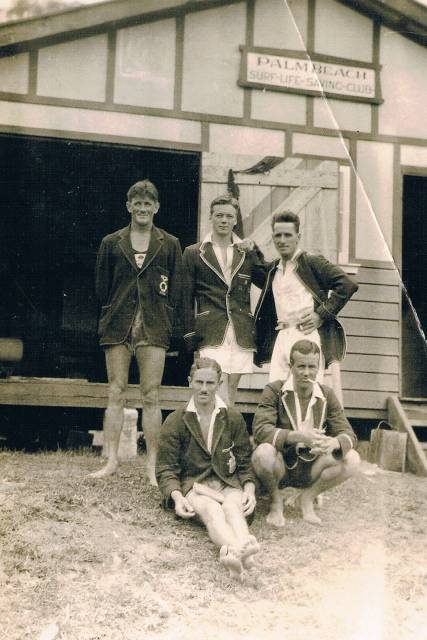
the second shed. Photo: Philippa Poole (daughter of Adrian Curlewis)
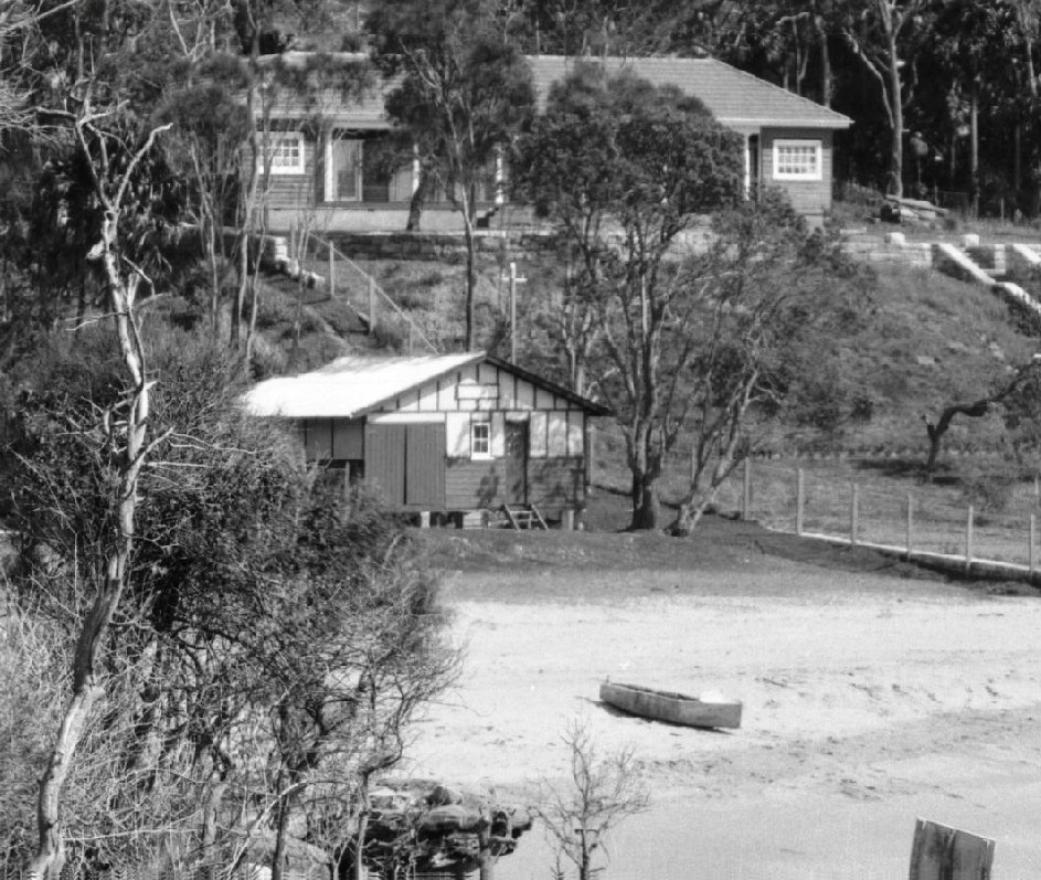
.jpg?timestamp=1706834479852)
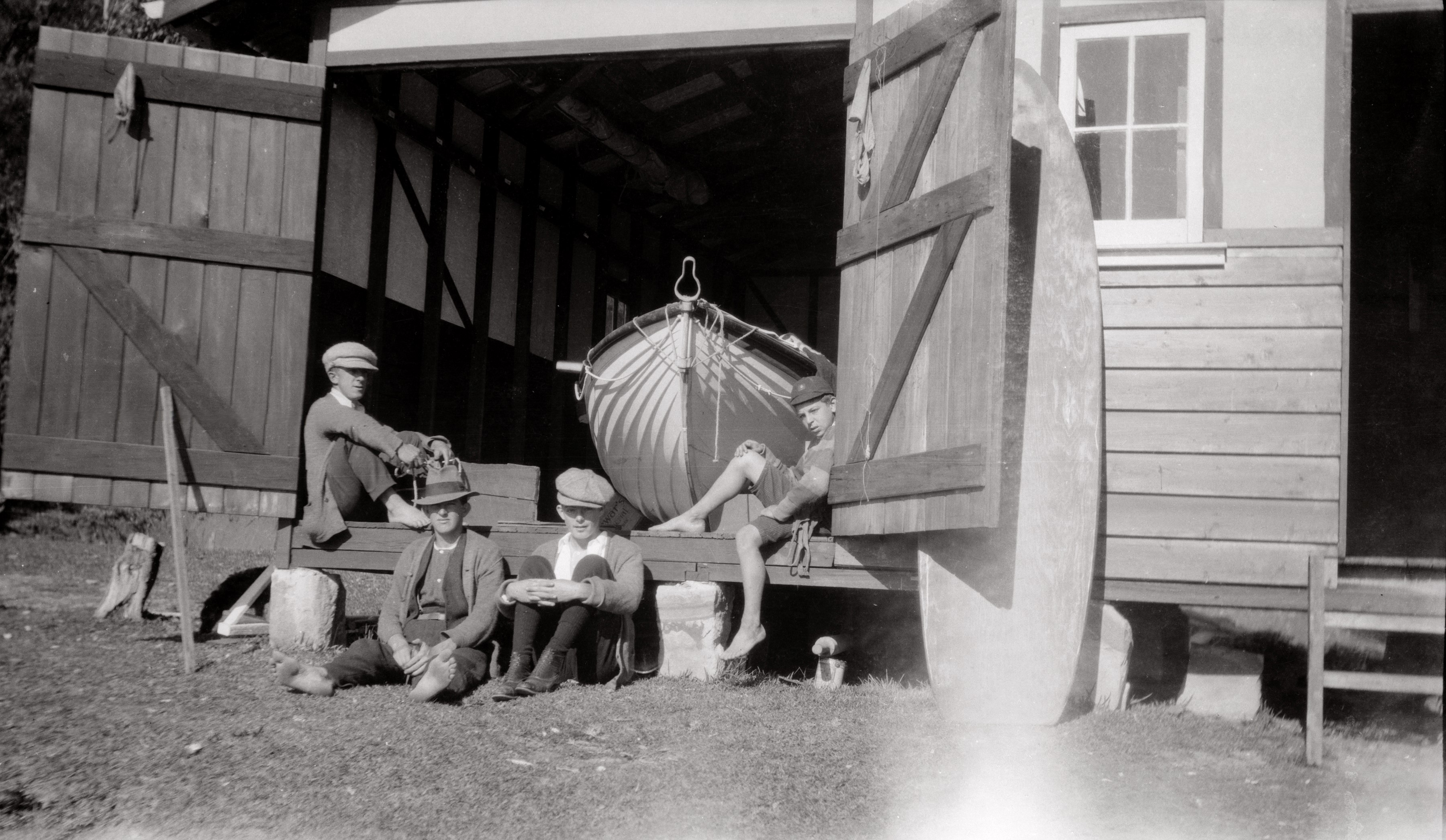
Club members were increasing rapidly too, much of this due to Adrian Curlewis' championing of the club and Palm Beach itself to fellow students at the University of Sydney's Law School and its residential colleges. Visitors and residents were kept safe, with some rescued during these first seasons.
Palm Beach was still a fair way from the rest of Sydney then though and after these first seasons, and the proven necessity for full-time lifeguards during Summer, supported by squads of volunteers, membership fell away and Dellit, after four seasons as Palm Beach's Lifeguard, and Instructor for new members, did not take up a fifth season.
Three years, and three different lifesavers later, Captain of the Club, Adrian Curlewis, in examining the problem, knew the Club and Palm Beach residents had to provide better accommodation for the full-time lifeguard than that already in place in the ramshackle shed. He approached Warringah Council to build further extensions which would provide a modicum of privacy for the resident lifesaver during the season.
A.J. Hordern, whose Summer residence was beside the Reserve, had, according to some residents, a growing dislike of this modified second 'ramshackle' shed, especially the way it interfered with the view from his balcony and the noise that came from it - after all, these were young men who, outside of Patrol times, were on holidays on the beach and great mates with the permanent residents who formed part of their crew. Did they get noisy? Of Course they did!! Just get a few handfuls of in their early 20's young men together in the one shed and its surrounds and stand back - you can hear them from the top of the hill.
Alfred offered to finance the building of a new clubhouse as long as it was on a site other then where it was at present. He would then 'lend' one hundred pounds on improving this park.
Pointing out that launching the surf boat to save people was faster using the channel that runs alongside the southern end rocks did not help. Despite support from SLSA, by August 1929 Warringah Shire Councillors presented a litany of their own complaints against the club, many of them hearsay and not based in facts, culminating in the removal of the shed from the public land that is Hordern's Reserve.
Further, there would be added costs for this new clubhouse, which the council expected the members to meet, and atop that, the council stated it considered the materials the members had purchased and used to build the second clubhouse as its own property and these could not be sold by the club to meet those costs.
PALM BEACH. DISPUTE ABOUT CLUBHOUSE.
Warringah Shire Council has decided that the Palm Beach Surf Club's club-house must be pulled down and that any new structure must be erected on a more suitable site. The existing club-house, a plain erection on a public reserve, has been the subject of an offer by Mr. J. A. Hordern, who has expressed his willingness to lend the council £100 for improvements to the reserve, and to assist the club financially towards the erection of a new building.
It has been stated that the members of the surf club did not want to move, and Councillor Corkery said that if they would not go, the club should be disbanded and a paid life-saver put on the beach. It would never do to allow the council to be dictated to by the club, which was on the beach for the purpose of life-saving only. The council will have a meeting with Mr. Hordern and the members of the surf club, to discuss the question of finance. PALM BEACH. (1929, July 10). The Sydney Morning Herald(NSW : 1842 - 1954), p. 19. Retrieved from http://nla.gov.au/nla.news-article16546792
PALM BEACH CLUB-HOUSE.
In a letter to the Editor, the captain of the Palm Beach Surf Saving Club (Mr. Kenneth Hunter) states that there has been no dispute with the Warringah Shire Council. Discussions that have taken place with regard to new premises for the club have been of a most harmonious character. PALM BEACH CLUB-HOUSE. (1929, July 11). The Sydney Morning Herald (NSW : 1842 - 1954), p. 12. Retrieved from http://nla.gov.au/nla.news-article16568126
Electing Mr. Hordern President did not help. Pointing out that launching the surf boat to save people was faster using the channel that runs alongside the southern end rocks did not help. Despite support from SLSA, by August 1929 Warringah Shire Councillors presented a litany of their own complaints against the club, culminating in the removal of the shed from the public land that is Hordern's Reserve.
At a Meeting held on August 7th the Council voted to remove the clubhouse from the reserve and for the construction of another further along the beach.
Further, there would be added costs for this new clubhouse, which the council expected the members to meet, and atop that, the council stated it considered the materials the members had purchased and used to build the second clubhouse 'shed' as its own property and these could not be sold by the club to meet those costs.
PALM BEACH SURF CLUB HUT.
The Palm Beach Surf Club's hut is to be removed from its present situation in a valuable public reserve to a more suitable site, near the centre of the beach. The Warringah Shire council will erect the new hut, which will cost £300. PALM BEACH SURF CLUB HUT. (1929, August 31). The Sydney Morning Herald (NSW : 1842 - 1954), p. 22. Retrieved from http://nla.gov.au/nla.news-article16579961
By December 1929 this building opened, south of the council dressing sheds. This structure comprised a club room, shower room, casualty room, lavatory, verandah and boatshed. Water came via a well and windmill, with any additions funded by members.
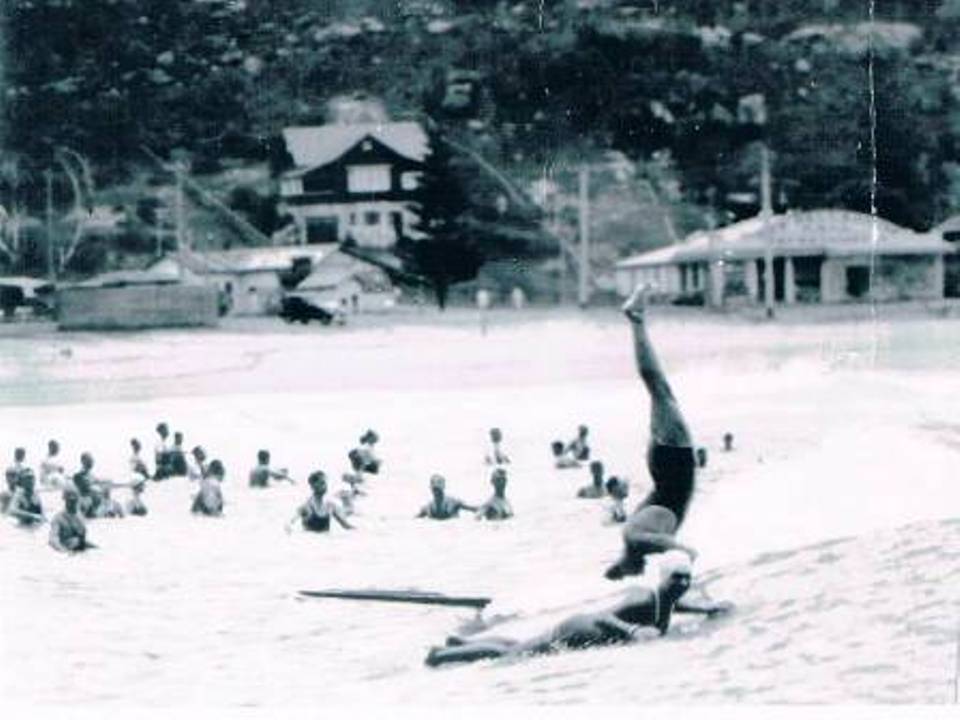
Adrian Curlewis, circa 1930-31 at Palm Beach - photo courtesy Philippa Poole - daughter of the 'Father of Surf Life Saving'
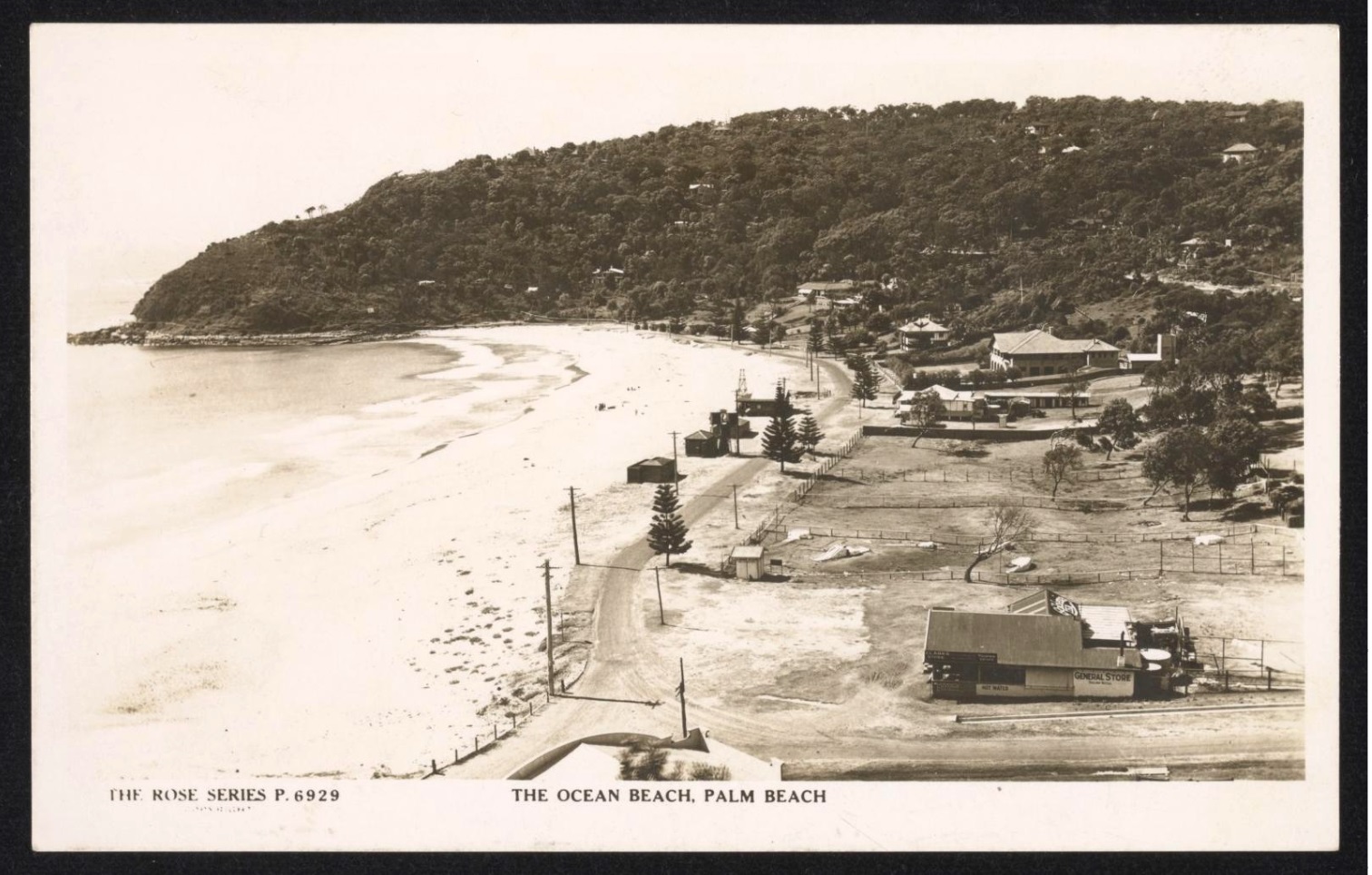
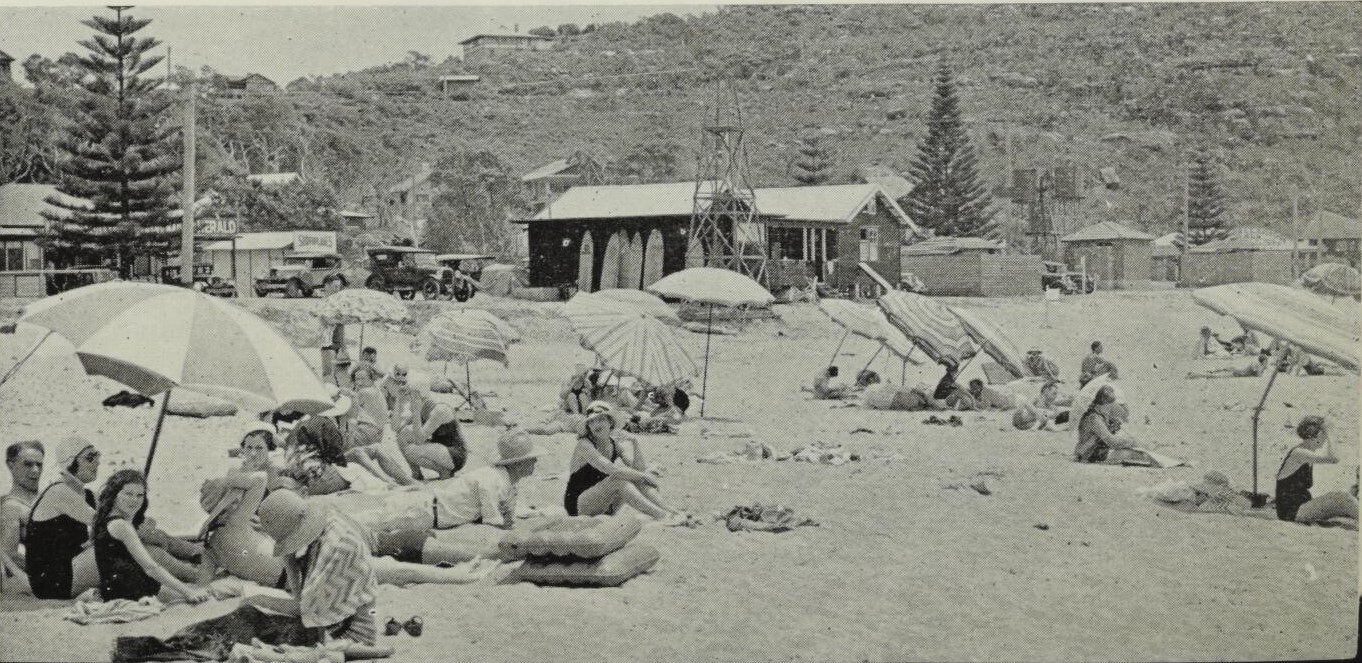
Photo caption: 'Palm Beach as it was' - note PBSLSC bunkhouse/clubhouse building in background with dark walls and light coloured roof. The Club applied to place a room for surfboards underneath but was knocked back by the council. Clearly simply stacking them against the exterior walls for quick access was practised. From: (Vol. 20 No. 2 1 February 1939 ). The Palm Beach myth, The Home : an Australian quarterly Retrieved from http://nla.gov.au/nla.obj-389607884
Once they had moved in the club members sought further alterations and engaged a Newport builder to complete these. They informed the council of their plans to construct a surfboard locker under the clubhouse to store the members by then 16 surfboards - PBSLSC led the charge in having boards added to surf lifesaving equipment - they also wanted to build a fence. The council objected and refused to allow them to do so.
The Warringah Shire Council Meeting held on February 24 1930 records:
10. Palm Beach Surf club. 10.2.30. Expressing regret for the Council's decision respecting the proceeds of the sale of the old Clubhouse Received. 11 Same Thanking the Council for its expression of appreciation of the efforts of the Club members in regard to the recent fatality at Palm Beach Received 12 Surf Life Saving Association 6.2 30 Suggesting that a life line be placed at Palm Beach at the scene of the recent fatality, and warning notices erected in conspicuous places Resolved (Crs. Parr, Austin) - That a couple of warning notices be erected there, but no life line.
The treatment by the council commenced the members decision to remove the council's interference in the club's affairs. There would be a fourth edition, or slight expansion of the building in that same location in 1933, the last under the council dictates:
SURFING
Palm Beach Happy With A Cash Surplus
All is well with the Palm Beach Surf Club, for at its annual meeting last night the financial position showed a surplus of £51/11/11.
The feature for the year's activities was the erection of what is known as the "Bunkhouse." This provides sleeping accommodation for twelve. The facilities thus provided proved of inestimable convenience to members on patrol. Electric light had been installed throughout the club house, while the casualty room, mainly through the generosity of Mr. G. M. Merivale, was re-lined and thoroughly re-conditoined.
During the season It was deemed advisable, to facilitate the training, of the boat crew in town; to purchase a boat from Dee Why Surf Club at a cost of £25. A further £19 was spent on reconditioning, so the club now owns two boats, both in excellent condition. Gear had been inspected, and found to be in efficient condition.
The Officers Elected
Regret was expressed that Gordon Morrow was not available this season as permanent life-saver, but the club had been fortunate in securing the services of Mr, J. H. Christie, of Dee Why, .who will commence duty at the beginning of December. Officers elected for the present season were: — Patron. Mr. Percy Hunter; president. Mr. E. R. Moser; vice-presidents; His Honor Judge Coyle, Messrs. R. T. McKay, W. J. Barnes, C. R. Crossman, D. B. Hunter, E. B. Harkness, W. W. Woodley, L. Gallagher, A H. Curlewis, J. M. Ralston, E. A. Box. J. P. Mant, B. B. Wiltshire, K. Hunter, A. M. Lamport, Commander Vitalli, Councillor Hitchcock; captain, B. V. Kenny; vice-captain, J. Hall-Johnstone, boat captain. G. E. R. Brown; hon. secretary, G. Wray; hon. treasurer, L. M. Moyle: hon. chief instructor, K. Hunter; gear steward, N. F. Brown; delegates to S.L.S.A., Messrs. K. Hunter. B. V. Kenny; hon. solicitor, Mr. J, M. Ralston; hon. auditor, N. H. Routley; hon. medical officer, Dr. D. G. Maitland; committee, Messrs. C. N. Walker. I. G. Kell, D. Carr, G. B. Morrow. J G. Rohr, J. H. Pilcher; trustees of club property. Percy Hunter, E. R. Moser. SURFING (1933, October 11). The Daily Telegraph (Sydney, NSW : 1931 - 1954), p. 4. Retrieved from http://nla.gov.au/nla.news-article247166389
With the proposed building of 'The Pavilion' the clubhouse was set to be moved again as all those structures on the beach verge would need to be demolished - Warringah Shire Council records show at the Meeting held on June 29th, 1935:
PALM BEACH BUILDING PROPOSAL Deputation from Palm Beach Surf Life Saving Club: Mr. J. M. Ralston, President of the Club, protested that the Club had not been Given an opportunity of considering the proposal, and contended that sleeping accommodation for Palm Beach members, should be provided in the new building. Mr. Curlewis,' President of the Surf Life Saving Association, objected to the site proposed by the Council on the ground that the surf in the vicinity was dangerous, and that the position of the Club's accommodation should be in close. proximity to the surfbathing area. Resolved, - That the matter be deferred for two weeks, the Club to be given an opportunity of inspecting the plan and the site. (Crs. Rosa, Sheppard) Resolved, - That Mr. Curlewis and Mr. Ralston be thanked for coming to the meeting to-night, and helping the Council with their suggestions. (Crs. Ross, Shepdard),.
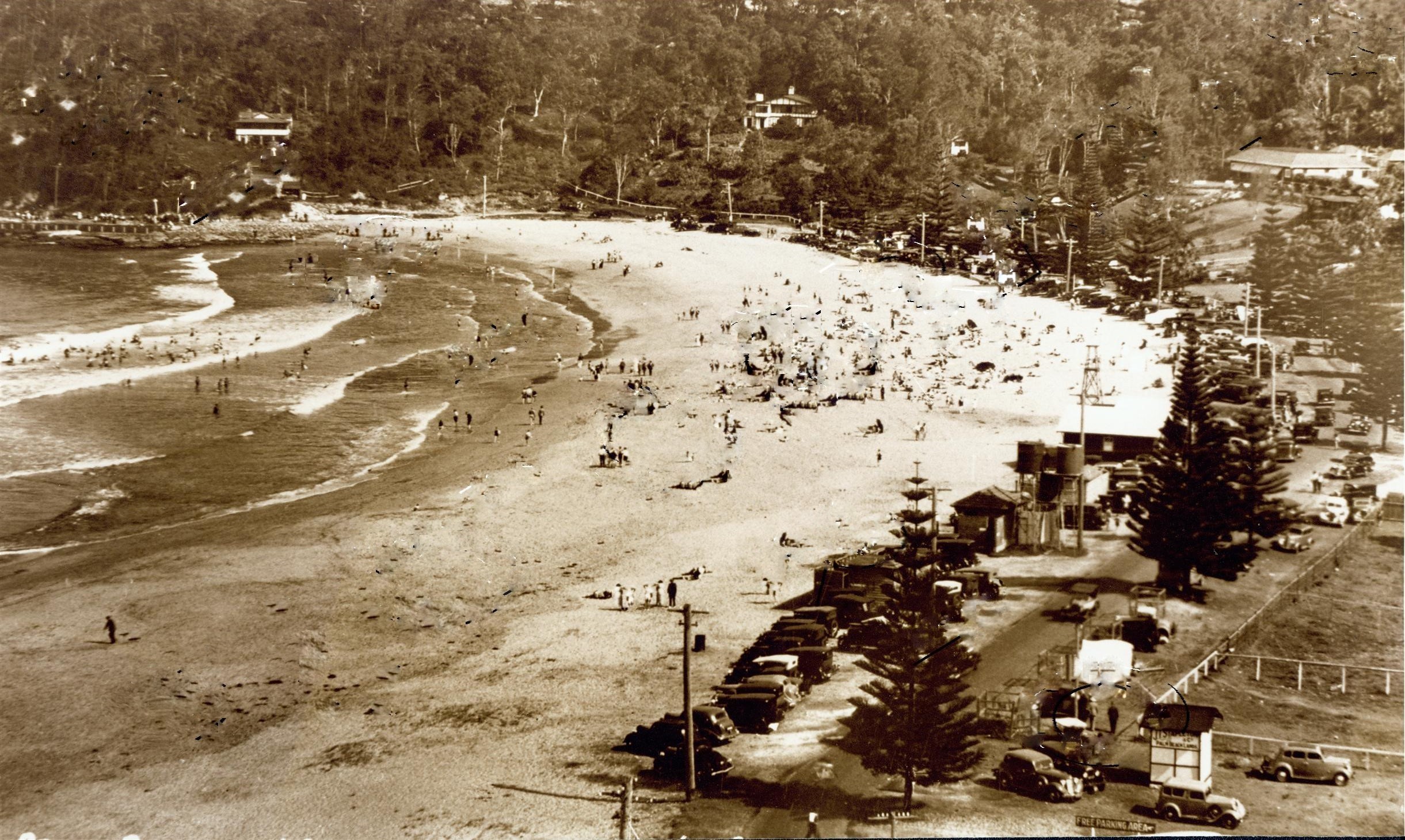
Glenburnie Park becomes 'Hordern' Park
In the Winter of 1932, A J Hordern, who had been ailing for some time, passed away. The SMH wrote
MR. A. J. HORDERN.
Mr. A. J. Hordern, of The Highlands, Waitara, died at his home on Monday, aged 73 years. Mr. Hordern was at one time associated with the firm now known as Hordern Brothers, Ltd. He retired many years ago and built a home in the centre of a miniature forest of gum-trees, where he devoted himself to the culture of rare and beautiful flowers which he had collected on extensive tours abroad. He is survived by Mrs. Hordern and two sons. The funeral took place yesterday morning.
"Redgum" writes:—
In the passing of Mr. Hordern, Sydney has lost one of her most competent and kindly tree and flower lovers. For more than 40 years he lived a quiet, happy life in his garden home at Waitara. From the ends of the earth plants were brought to Waitara. The best procurable was never quite good enough for The Highlands, where many blossoms were grown to perfection, and which became a veritable fairyland. "A.J.," as he was known to his friends, was the kindliest and the most humorous of men. All he asked in his later days was to be left alone to enjoy life at Waitara in a great circle he had cut from the original bushlands, where there were privacy, prettiness, and peace. MR. A. J. HORDERN. (1932, August 17). The Sydney Morning Herald (NSW : 1842 - 1954), p. 15. Retrieved fromhttp://nla.gov.au/nla.news-article16917011
Minutes of Meeting of Warringah Shire held Monday January 16th 1933:
The following requests, submitted by the Councillors named, were agreed/to:- Glenburnie By Cr. Hitchcock- That the seats in Glenburnie Park, Palm Beach, which were damaged by vandals, be reinstated by the Inspector.
At the Monday 11th September 1933 Warringah Shire Council Minutes of Meetings record a name change for Glenburnie Park to honour the input of Mr. Hordern:
The following requests, submitted by the Councillors named, were agreed to .... By Cr, Hitchcock, seconded by Cr.-Austin - That the name "Glenburnie Park" be altered to "A. J. Hordern Park" in recognition of the keen interest taken in the reserve by the late Mr. Hordern, and of the money expended by him in maintaining it.
However, that re-naming clearly took some time to be formalised. The Minutes of Meeting of Warringah Shire Council held on Monday 23rd October 1933 record the Horderns kept on looking after Palm Beach reserves:
Wilshire Park - Palm Beach, _Engineer's report para. 8 to this meeting: Cr. Hitchcock reported that Mrs. A. J. Hordern had informed him that if she were allowed to use this stone, she would in return look after the reserve. Resolved; That Mrs. Hordern's request be granted, provided she keeps the reserve in order, and that a letter be sent to H. and F. Gonsalves, warning then against taking material from the Council's properties. (Crs. Hughes, Austin)
Warringah Shire Council minutes of Meetings of November 20th, 1933: By Cr. Hitchcock - That the preparation of plans for drainage at Wilshire Park and Glenburnie Park be expedited. Careel Park; by Cr. Hitchcock - That plans for dredging Careel Park be prepared as soon as possible.
In the Minutes of Meeting of Warringah Shire held Monday December 4th 1933:
Wilshire Park Drainage: Deferred until Engineer Wilshire plans for Glenburnie Park drainage, and widening the this vicinity.
Although Alfred James Hordern is stated to have had a love of his gardens, and is credited with planting the first Norfolk pines along Palm Beach, it is more likely Caroline who undertook organising gardeners for this work and her husband whose standing in the community of Sydney leant more weight to any requests or matters about his family.
Warringah Shire Council records from Meetings show:
R.T.McKay. 16/4/34, requesting that the long oak trees which are decayed at the bottom, on Hordern Park, Park Beach, be cut down, as they are about to fall and will destroy young trees planted by Mr. Hordern, or will injure his fence. Resolved, - That Mr. R. Howlett be given permission to remove the trees. (Crs. Hitchcock., Hughes) 64. Same, 16/4/34, requesting that the Water tables in Florida Road between Scott Road and the park, and between his place and Mrs. Hordern’s place, be improved, suggesting that the material from the gutter on the southern side of Florida Road be placed on the raised area on the north side. Resolved, - That a short section of Florida Road, about 2 chains, be ballasted to prevent the water crossing the road, the cost to be deducted from the Florida road vote. 65. R.L. Mortimer, 16/4/34, requesting an estimate of the cost of gravelling and tarring the frontage of his stores at Mona Vale. Referred to the Engineer for report.
However, this 1937 photos shows the name change was accepted by the State Government and the sign erected, and even provide a glimpse of Kalua right next door:
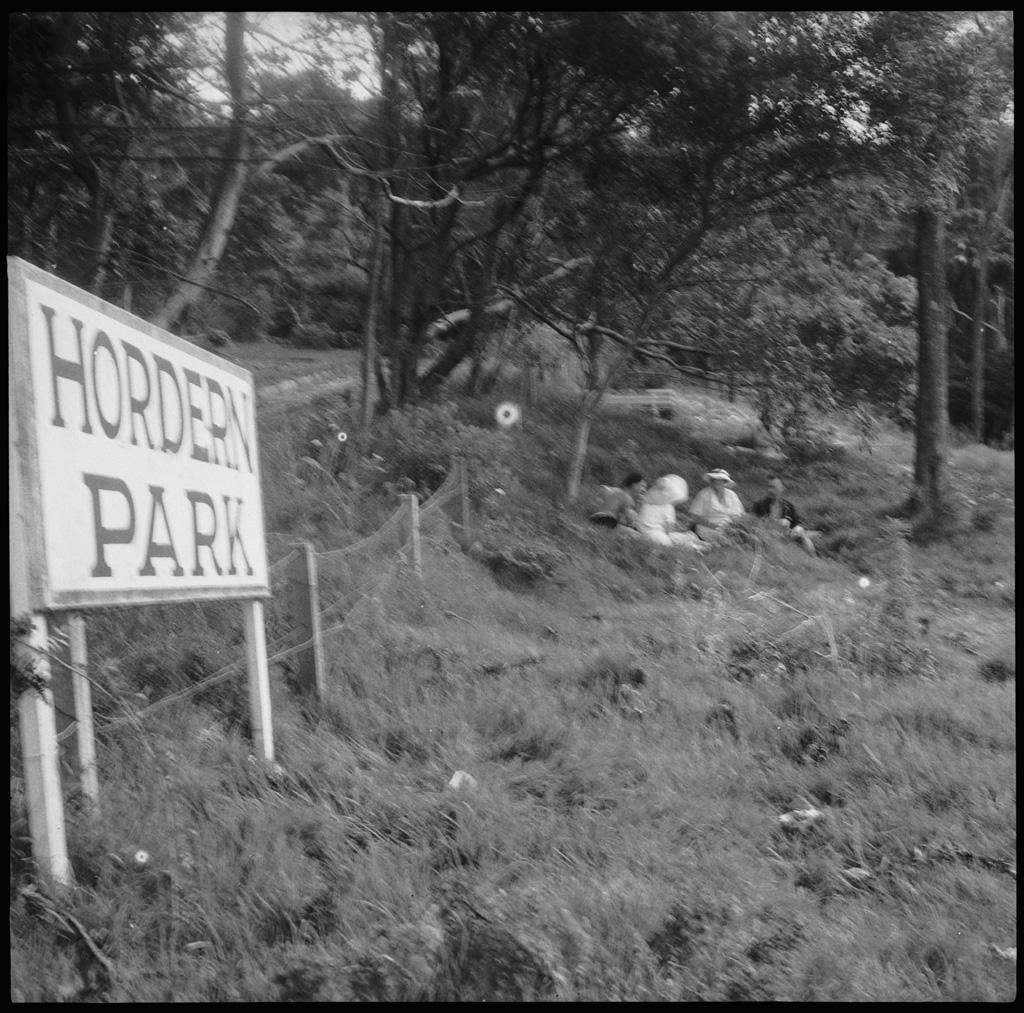
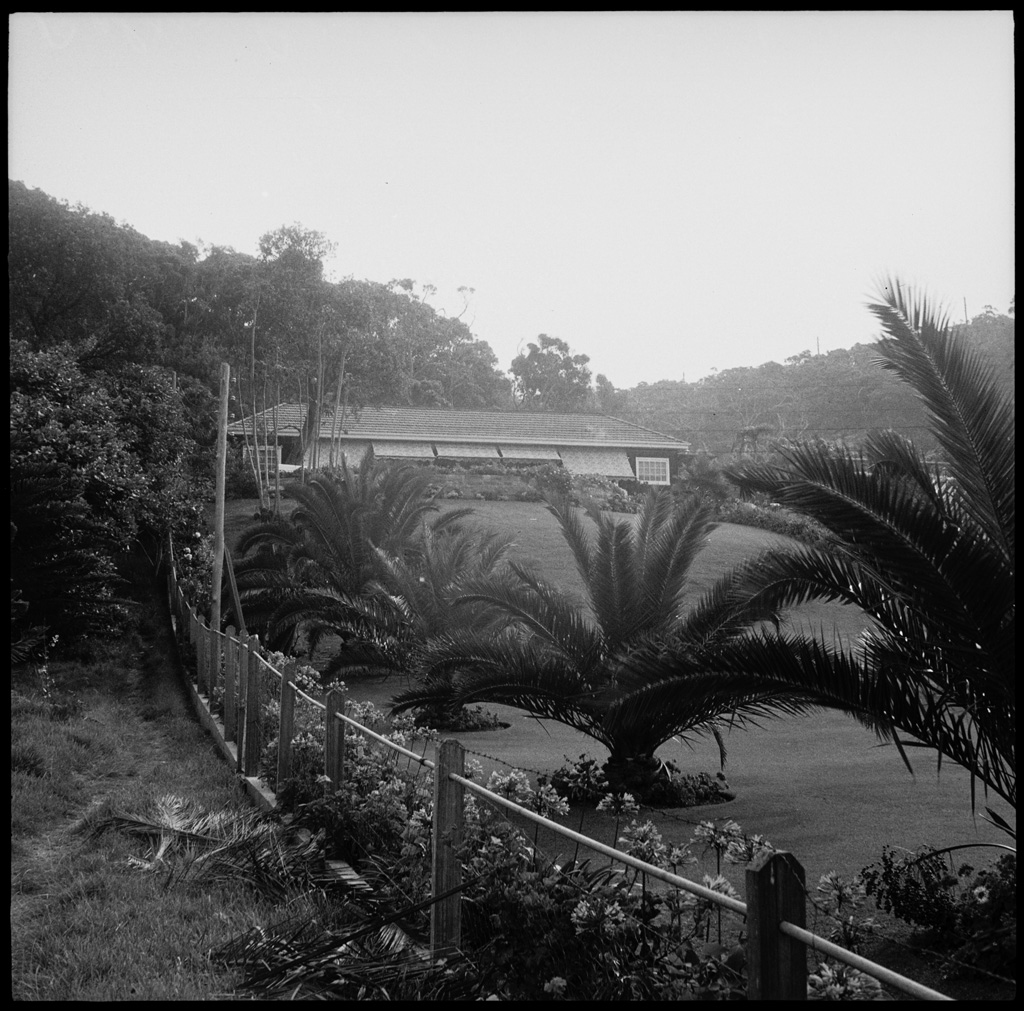
From Album Palm Beach, December 1 1937 and January 6 1938 / photographed by Ray Olson - these are Pix magazine photographs, and taken or published in 1937 and 1938, courtesy Mitchell Library, State Library of New South Wales and courtesy ACP Magazines Ltd.
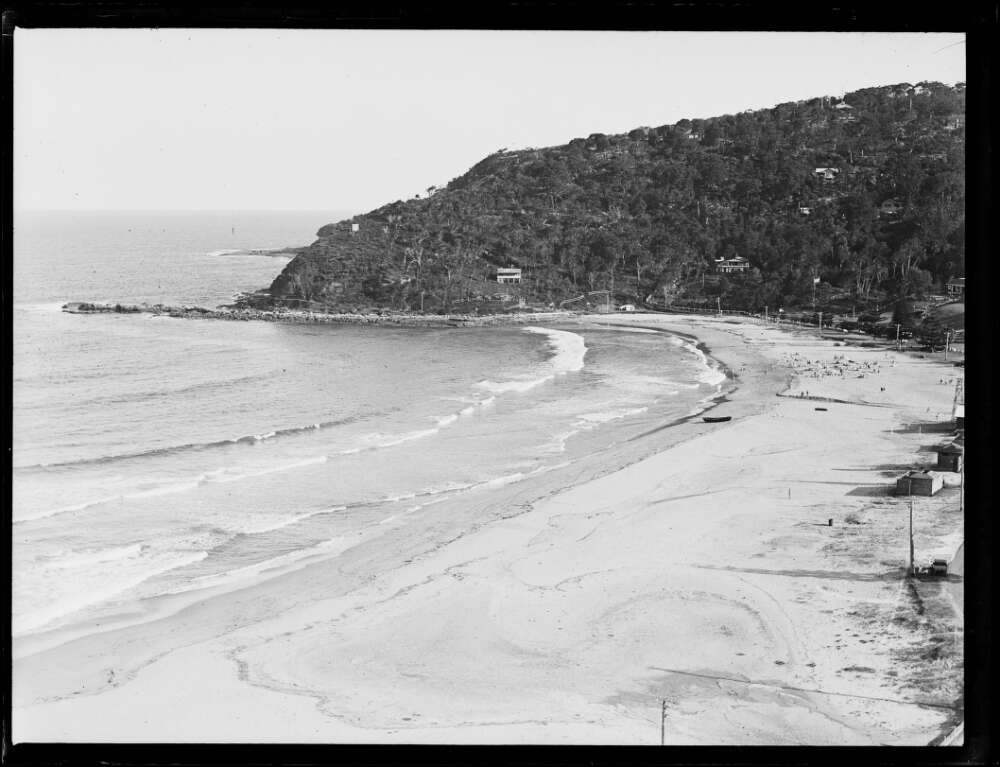
Fairfax Corporation. (1930). Houses on a hill at Palm Beach, New South Wales, ca. 1930s + enlarged sections from to show details Retrieved from http://nla.gov.au/nla.obj-162441819
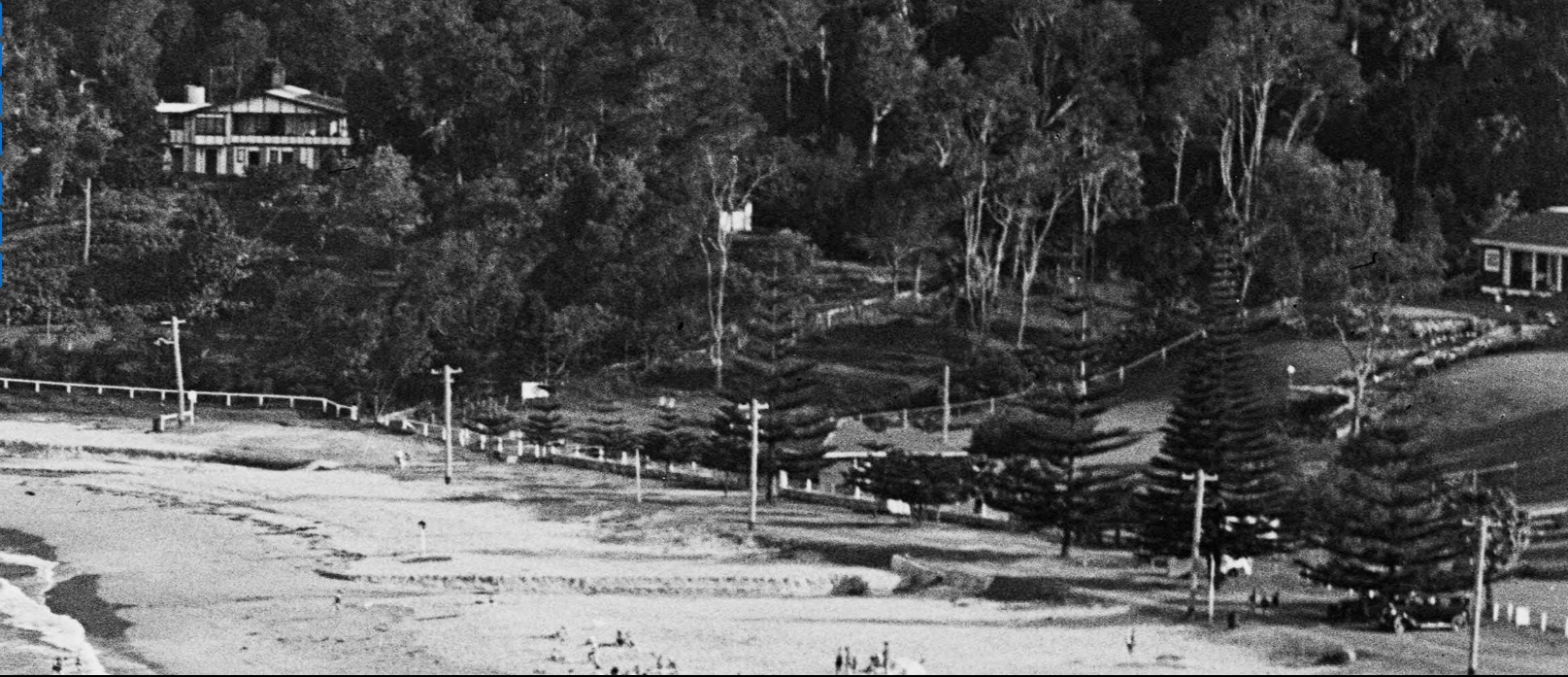
.jpg?timestamp=1719355833340)
.jpg?timestamp=1719348565415)
.jpg?timestamp=1719348599650)
I know there is a lot of people here who Jack would like to thank, and we talked about this before he passed away. First, Nugget Meares, Life Member, is here today; when Jack was in his early years he marched his kids from the morning group, after the watermelon fight, full of hot dogs, red frogs and red cordial, through all 3 clubs. Those kids were hopped up on sugar and on a rampage; I was coming out of the water at the time and saw cushions come flying out of the Pacific Club, quickly followed by mattresses flying out of the clubhouse, more items flying out of the Cabbage Tree club – they destroyed all 3 clubs. Jack was pulled up before Committee and I think it was Nugget who saved him.His daughter Robey Carter:There’s a few things that I can’t do anymore, for instance, the watermelon fight – I’m sure there’s lots of memories for those who were part of that when that took place.The iron man remains a great event we carry forward as started by dad. Where I teach swimming at Lake Macquarie people often say to me ‘what is it you do there?’ and I can’t explain it, I say ‘it’s the only place in the world that this takes place’.I don’t think anywhere in the world runs a swim program like the swim program that happens at Palm Beach each Summer, and it’s been running since 1947.
hordern Park June 2024
photographed Monday June 10, 2024 and in January 2024 - from Ocean road beachfront entrance to Florida road north entrance, and then back down the hill again to oceanfront - showing the 3 bridges, and 2 creek bed flows as well as vegetation.
_________________________________________________________________________________________________________________________________________
Florida Road, Palm Beach entranceway - to head back down the hill to the beach:
Hordern Park + Creek Runoff Onto The Beach: May 29, 2023
references - extras
- TROVE - National Library of Australia
- Warringah Shire Council records - digitised by Warringah Council and now held in the Northern Beaches Council History hub
- Wilshire Park Palm Beach: Some History + Photos From May 2022
- Pittwater Summer Houses: Kalua, Palm Beach
- Harry Wolstenholme - June 21, 1868 - October 14, 1930; Ornithologist Of Palm Beach, Bird Man Of Wahroonga
- Pittwater Reserves: The Green Ways Hordern And Wilshire Parks To McKay Reserve – From Beach To Estuary
- The First Weekenders On The Palm Beach Beachfront + A Look Into Palm Beach SLSC Clubhouses In The Club's 101st Season
- Jack ‘Johnny’ Carter's Ashes Returned To His Palm Beach Home - 2023 Celebration of his life
- Early Pittwater Surfers: Palm Beach I : John Ralston and Nora McAuliffe
- Early Pittwater Surfers: Alrema Becke, Queen Of Palm Beach
March 13, 1933 Meeting:
(46) Palm Beach Progress Assoc.; 25/2/33. advising Council of formation of Association, with Mr. C.P. Curlewis as President, and Mr. W, Goddard, Sen. as Acting Secretary.
The January 18, 1938 Warringah Shire Council Meeting records
14. R. S.York, 23/12/37,.requesting that the short unnamed road connecting Ralston Road and Pacific Road, Palm Beach, Street separating Sections 4 and 5 Palm Beach Estate, be named *Ebor Road*, and a street name board erected. Resolved, - That the requests be granted.
What's interesting about Henry Lloyd's sketches of Barrenjoey is these compared to a circa 1834 sketch by William Govett, who was on staff of Major Mitchell, Surveyor General of New South Wales, 1830-1835, taken from what looks to be the Palm Beach side of the tombola showing a different perspective of the headland:
Colonial Statistics. BROKEN BAY AND BRISBANE WATER - 1838
THERE is no part the colony within a hundred miles of Sydney, which has either been so long settled, or so little frequented by travellers from our colonial capital, as the country intervening between Port Jackson and Broken Bay. It is a broken, sterile, and uninteresting country for the most part; but there are particular spots in it of a much superior character, and the scenery in certain localities, especially along the coast, on the Narrabeen Lagoon and the inlet called Pitt Water is exceedingly fine. We happened to make a pedestrian tour from Manly Cove, on the north side of the harbour near the Heads, to Broken Bay a few weeks ago; and, although we cannot say much either for the country or the road, there is nevertheless sufficient to be gleaned by a careful observer ever in such a tour as to prevent us from saying, " it is all barren." In fact, as the finest flowers and shrubbery are generally found on the most barren land, it is not always the best land that will furnish the best subject for a good literary article.
An extensive bottom, as the farmers would call it, of the richest alluvial soil may be exhibiting to the delighted eye of the settler a splendid crop of maize; or a series of "flats," with not a tree upon them in their natural state, may present the finest wheat land in the world ; but we confess there is very little bottom for a good article in either case, and even a good writer soon becomes flat enough unless he takes a kangaroo leap to some subject of a more interesting or spirit-stirring character. To be threading one's way, how- ever, through a tangled wood while the loud roar of the vast Pacific's big ocean waves breaking ever and anon on the ironbound coast of this vast terra incognita, is sounding in one's ear like distant thunder, or like the roar of artillery — to mount one of those barren hills that stretch along the coast to catch a glimpse of the wild, but romantic scenery around from its rocky summit — to be walking by moonlight along one of the sandy beaches that line the shores of Pitt Water, the exact counterpart of one of our finest Scotch Highland lochs—to be arriving late in the evening at some small settler's farm, who has just been six months on his land, to be regaled with tea without sugar out of a common water-jug, and a piece of a damper—to sleep, or rather to attempt to sleep with a host of active little combatants as numerous and as formidable as a Roman legion— and finally to lose one's way for five or six hours in the bush, and to arrive at the North Shore with one's clothes so torn with the prickly shrubbery of that locality as to render it necessary to bivouac for a time till the sun has gone down on the town of Sydney, and darkness covers the land—these are the subjects which one can either write upon, or read about without getting tired or complaining of flatness.
There is a respectable family of the humbler walks of life settled at Manly Cove whose establishment exhibits in a very strong light, the immense benefits which this colony will eventually derive from the introduction of reputable and industrious families of a similar class in society into its extensive territory, under the admirable system introduced by the Whig ministry, in appropriating for that most important purpose the proceeds of all Crown land sold in the colony. The family we allude to is of the name of Parker. It consists of a husband and wife, rather past the middle age, and two stout young men, their sons. The father is a gardener, who emigrated with his family from England to the Cape of Good Hope a good many years ago, but preferring this colony, from all he had heard and read of it both in England and at the Cape, came on to New South Wales, leaving his third son in business at Cape Town. One of Mr. Parker's other two sons is a stonemason, and the other a carpenter and cabinetmaker, each of whom appears to be as much an adept in his own business as his father, who is a remarkably intelligent, shrewd, and well-principled old man, evidently is in his. Mr. Parker has purchased twenty acres of land and rocks on the eastern side of the cove, part of which he has laid out very tastefully, his two sons having been occupied in the mean time in erecting a neat stone walled cottage with suitable outhouses, part of the walls of both being the solid rock, which has been hewn away in certain places, and allowed to remain in others to suit the taste or convenience of the proprietor. In short the combination of mechanical force which Mr. P.'s virtuous and respectable family have been able to bring to bear on their little property is one of the happiest we have witnessed in the colony, and the result, we are confident, within a very few years hence will be the transformation of their twenty acres of rocks and land, hitherto deemed good for nothing, into one of the best cultivated, most romantic, and most valuable properties of its size within a day's journey of the capital. Mr. P.'s object has been to establish himself as a gardener and nurseryman, to supply the Sydney market with vegetables, fruit, fruit- trees, and shrubs.
As soon as a few small steam boats, such as ply on the river Mersey between Liverpool and the numerous little thriving villages along the Cheshire shore, are procured and set to work in our harbour of Port Jackson to ply between Sydney and the more important localities on the opposite shore, every acre of available land within a reasonable distance of the North Shore, will be increased in value several hundred per. cent. We are happy to find that an experiment of this kind is about to be tried by the establishment of a Steam Ferry Boat between Dawes' Battery and Billy Blue's Point. The establishment of such a boat will not only lead to the formation of several thriving villages on the North Shore, but will set an example which some people will soon follow by placing boats of a similar kind on other short courses within the harbour. Within a few miles of Manly Cove, from which there is a tolerable road for a considerable distance towards Broken Bay, there is more available land than we anticipated finding, and there is already something doing also in the way of improvement; the important operations of felling, fencing, and cultivating, being pursued by certain proprietors in that neighbourhood with some vigour. A very large portion of the land, however, is irreclaimably and hopelessly sterile.
On the banks of the Narrabeen Lagoon, a pretty extensive and romantic sheet of water situated about nine miles from Manly Cove, and communicating with the ocean in high floods there is a small extent of superior land for cultivation with a considerable tract of very fair pasture land belonging to the family of the late Mr. Jenkins, of Sydney; and about three miles farther on, towards the head of Pitt Water, there is a very fair cultivation farm leased to a small settler of the name of Foley. But the patches of arable land all along from Port Jackson to Broken Bay, are generally of such limited extent and the pasture land of such inferior quality to the forest land of the interior, that there must always be a very limited and widely scattered population in that part of the territory.
The South Head of Broken Bay is called by its native name, Barranjoey. It is a bold, rocky headland, situated at the extremity of a long narrow strip of land separating the main ocean from Pitt Water, and has evidently been an island at some former period, with a spit of sand running out from it towards the south. This sand-spit would be gradually extended by every gale till the island was at length married indissolubly to the main, the ceremony of joining hands having been performed by Father Neptune himself. There is a small patch of alluvial land of the first-rate quality near Barranjoey Head, on which a very industrious small settler of the name of Sullivan has set down, within the last few months, on a lease from Mr. Wentworth, the proprietor. The extent of land he has managed to clear and put into crop in so short a time, is as creditable to the settler as the splendid crop of maize and tobacco it bears is to the land. The neighbour-hood of Pitt Water and Brisbane Water is considered particularly favourable for the growth of onions, and the raising of that useful article of horticultural produce for the Sydney market, is the main dependence of the small settlers in these districts. The past season has been considered rather unfavourable, however, for this crop, the late rains, which have come in such good time for the maize, having been too late for the onions; but we found a very tolerable crop notwithstanding on various farms in both districts.
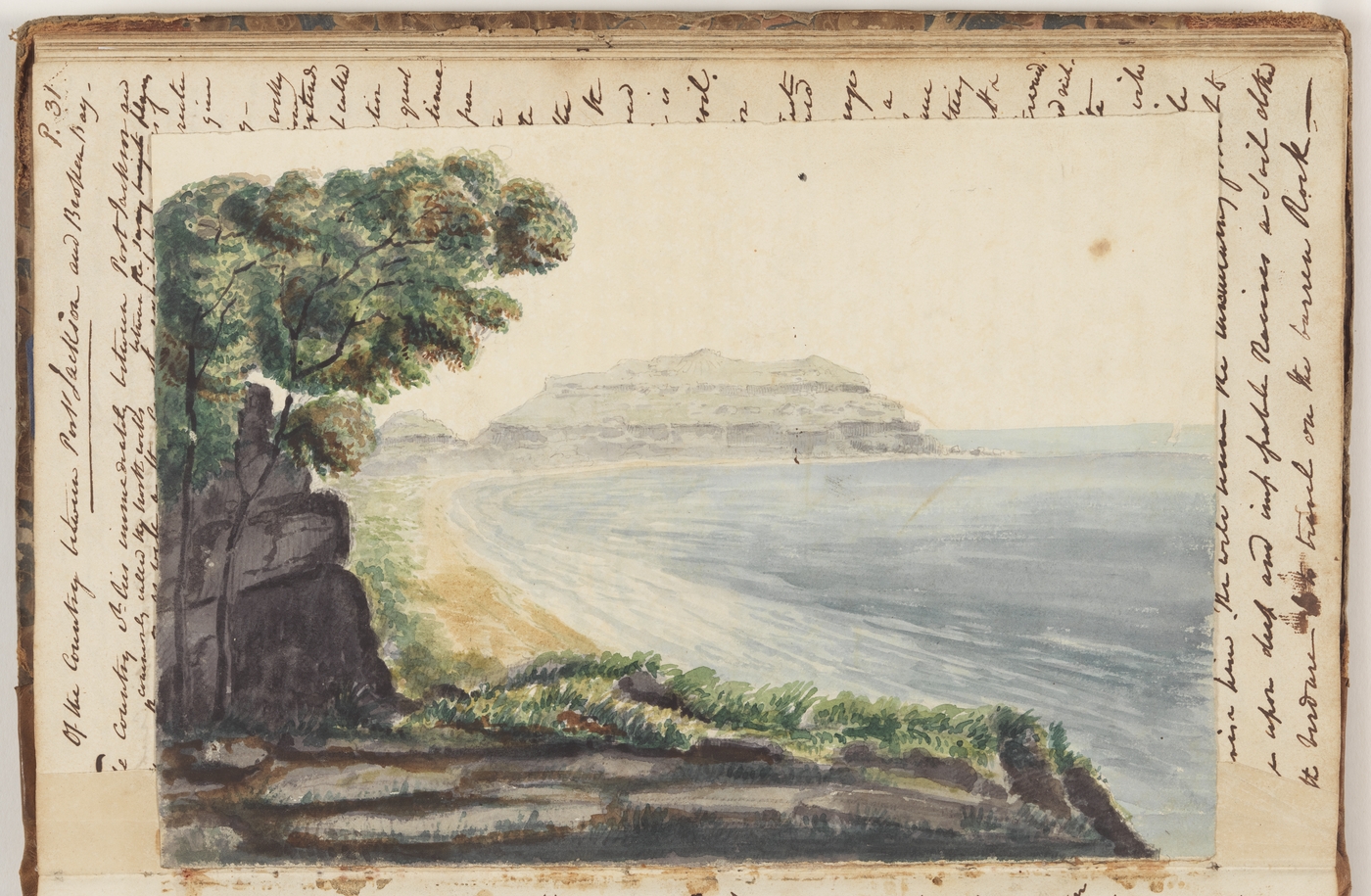
'South Head of Hawkesbury River called by the Natives Barrenjuee [sic]'. W.R.G. Image No.: a5504050 from; William Govett notes and sketches taken during a surveying Expedition in N. South Wales and Blue Mountains Road by William Govett on staff of Major Mitchell, Surveyor General of New South Wales, 1830-1835
The scenery near Barranjoey is romantic and interesting in a very high degree, the land and water being finely disposed for a picture, and the forest trees on the low ground along Pitt Water being remarkably umbrageous and beautiful, while the view from the Head itself — including the vast Pacific; Pitt Water separated from it by the narrow strip of land above-mentioned, and running up for the remaining part of its extent between two ranges of considerable elevation, and losing itself at length in the distance; Broken Bay, with the lofty, precipitous rocky island, called Mount Ellis, guarding the entrance of the Hawkesbury, and standing off, like a sentinel on duty, from its opposite shore, while the lower reaches of that noble river are seen stretching far inland between the lofty and barren ranges that line the whole extent of its course from the Blue Mountains to the ocean — all this is uncommonly fine.
Second or third-rate writers of literary articles of this kind regularly wish for the pencil of a Claude, or a Salvator Rosa, when they find themselves in such situations as we found ourselves in, to our no small gratification and delight, when we stood perched for a time on Barranjoey Head ; but as such idle wishes would not save any of our readers who might be desirous of experiencing the same pleasurable emotions, the trouble and fatigue of a long pedestrian tour through the bush, we shall not put ourselves to the trouble of uttering them. If any of our readers should be desirous of visiting the district of Brisbane Water, which we can assure them is well worth visiting, we would by all means advise them to postpone their visit till some of our enterprising colonial speculators shall have put a steam-boat on the course between Sydney and Brisbane Water.
For our own part we crossed Broken Bay in Sullivan, the small settler's small boat; and as there is a large extent of shallow water on the north side of the Bay, on which the sea breaks violently (whence its appropriate name, Broken Bay) whenever there is the least wind from certain quarters, we confess that sailing in such a vessel is somewhat dangerous. Rollers rise instantaneously, even in the mildest weather, in the Bay, and when one of these breaks on a small boat she is almost sure to be swamped, and all on board drowned. Brisbane Water is an inlet from Broken Bay, opening into the land at its north-eastern extremity. There is a reef of rocks extending for a considerable distance across the entrance from south to north, but the channel is sufficiently wide for those who are at all acquainted with the locality. The inlet, for a considerable distance up, is exactly like the embouchure of a large river, and as there are several other inlets of a similar kind opening into the main one, as Broad Water, Kingcumber or Cockle Creek, the district is a complete alternation of land and water, affording excellent means of communication for the settlers and most delightful scenery. Both along the banks of the main inlet and the other two just mentioned, there are settlers' houses for the most part picturesquely situated with a greater or smaller extent of land in cultivation around them according to circumstances.
There is much alluvial land of the first quality in the district, and the crop of maize, wherever we had an opportunity of observing it, was quite magnificent. Maize, onions, shingles, and sawed timber are the principle productions and exports of the district, and from the large quantity of these articles that have been exported to Sydney during the last few years, the settlers generally, we were happy to find, are in a thriving condition. Indeed, the district of Brisbane Water has sufficient resources for the sustentation and employment of a large population, and its vicinity to the capital will certainly attract numerous and reputable families and individuals as permanent residents in it whenever it is thrown open to the public by the establishment of a steam communication with the capital. From the want of such a communication at present Brisbane Water, although within four or five hours sail of Sydney, is virtually as distant from it as Port Macquarie, and till such a mode of communication with it is established, its re- sources will never be developed nor its rapid advancement both in population and in importance generally secured. It is a matter of astonishment, therefore, to us, that while there is such a rage exhibited in the colony, on the part of certain of our colonial speculators, for the extension of steam communication with Hunter's River, the capabilities of a district, so much less extensive it is true, but so much nearer hand, should hitherto have been so totally neglected.
There are at present three steam boats running between Sydney and Hunter's river, and a fourth is expected to commence plying immediately. Now, whether this is overdoing the thing or not we have no means of determining; but as the smallest and tardiest of these vessels will in all likelihood stand but an indifferent chance of success in competing with the others, we would by all means advise the proprietor to try the experiment of changing her course by causing her to ply alternately between Sydney and Brisbane Water, and Sydney and Illawarra. Neither of these districts is supposed to be at present sufficiently advanced to afford constant employment to a steam vessel of the size of the Maitland, but knowing both of them, as we happen to do, we are confident they would afford such employment to any vessel that would make a voyage from the capital to each alternately.
The machinery of the Maitland is scarcely powerful enough for her size, and although a good sea boat she is unable to make much progress against a head sea. She will therefore run the risk of being driven off the course when a third powerful vessel, to ply twice a week, is placed on the Hunter's river line. But her slower rate of sailing than that of the other Hunters' river vessels would be no objection either at Illawarra or at Brisbane Water; and although the proprietor might not realize his expectations by placing her on that course at the very first, we are confident that the rapid advancement of both of these districts, beyond all former precedent would not only be the certain result, but would amply and speedily repay him for all his original outlay. Verbum sat sapienti.
The Rev. Mr. Rodgers of the Church of England, and the Rev. Malcolm Colquhoun, of the Church of Scotland, have both recently gone to settle as ministers of the gospel at Brisbane Water. We most heartily wish them both all success. Colonial Statistics. (1838, February 28). The Colonist (Sydney, NSW : 1835 - 1840), p. 2. Retrieved from http://nla.gov.au/nla.news-article31720524
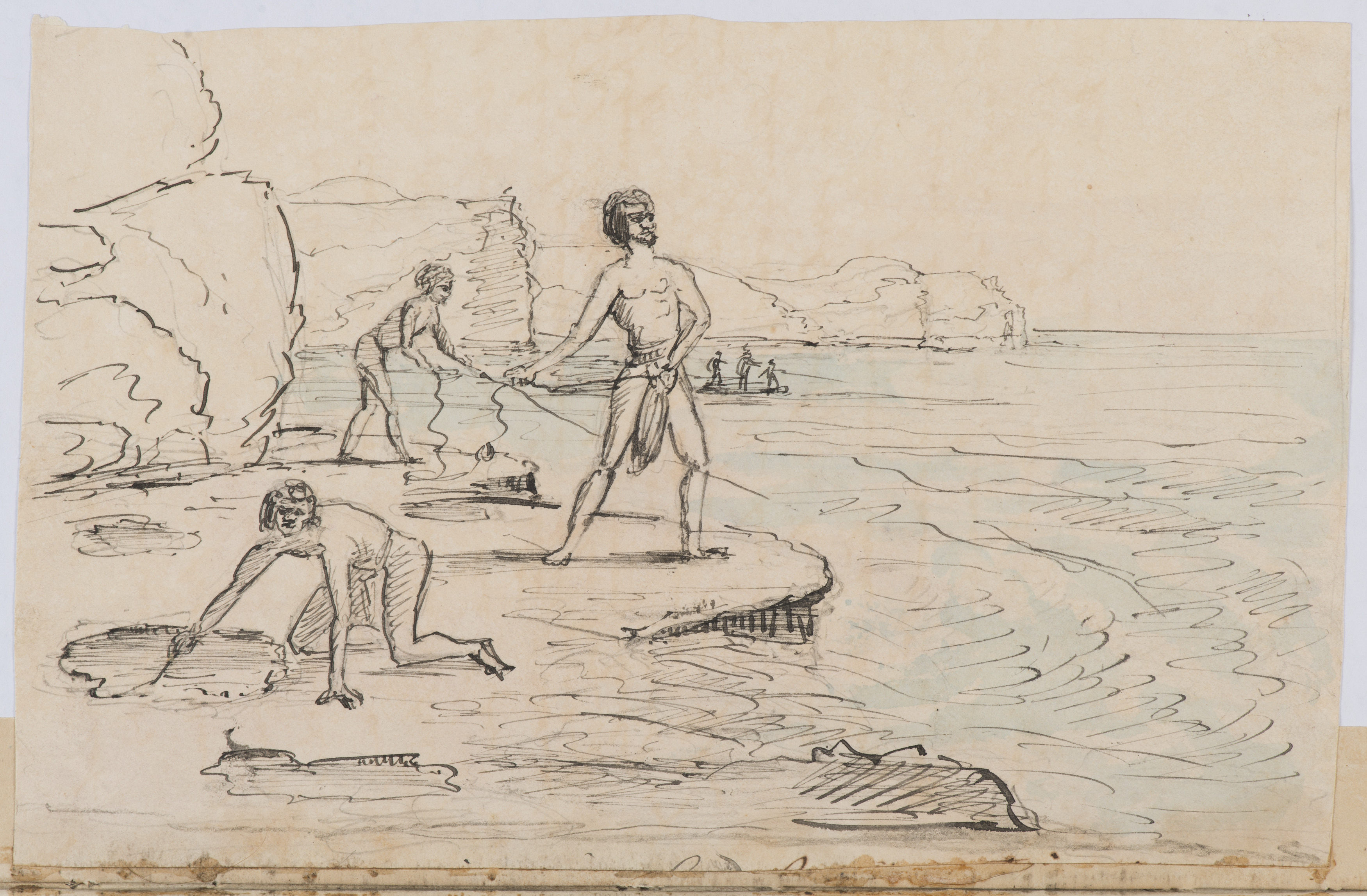
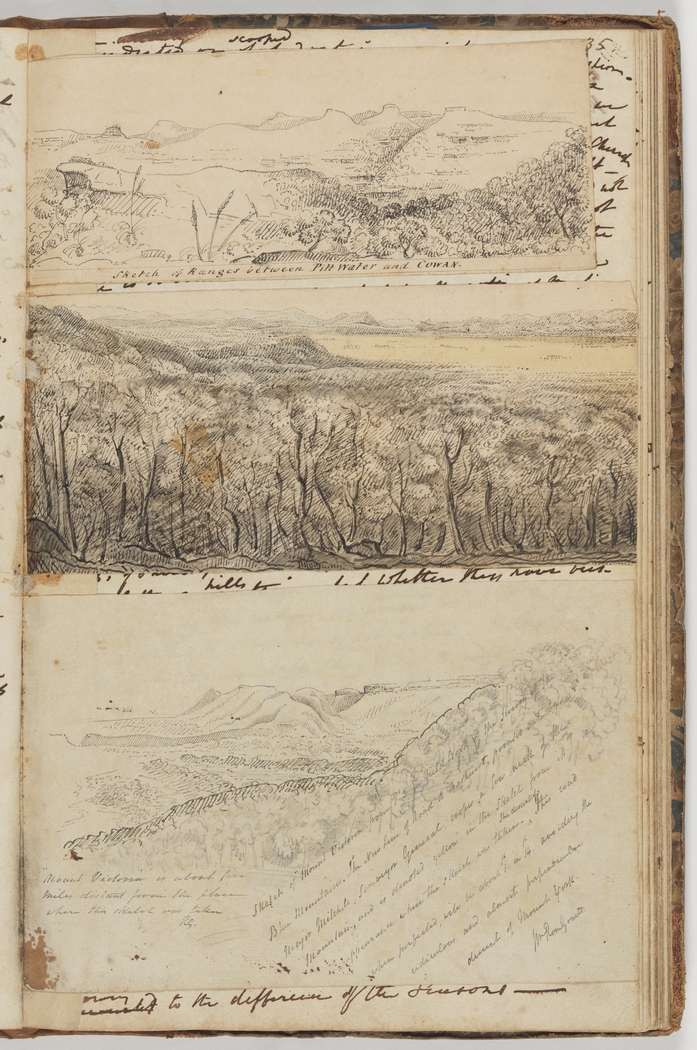
Major Mitchell, Surveyor General of New South Wales, also made a sketch of this area around a decade prior to Mr. Govett's visit:
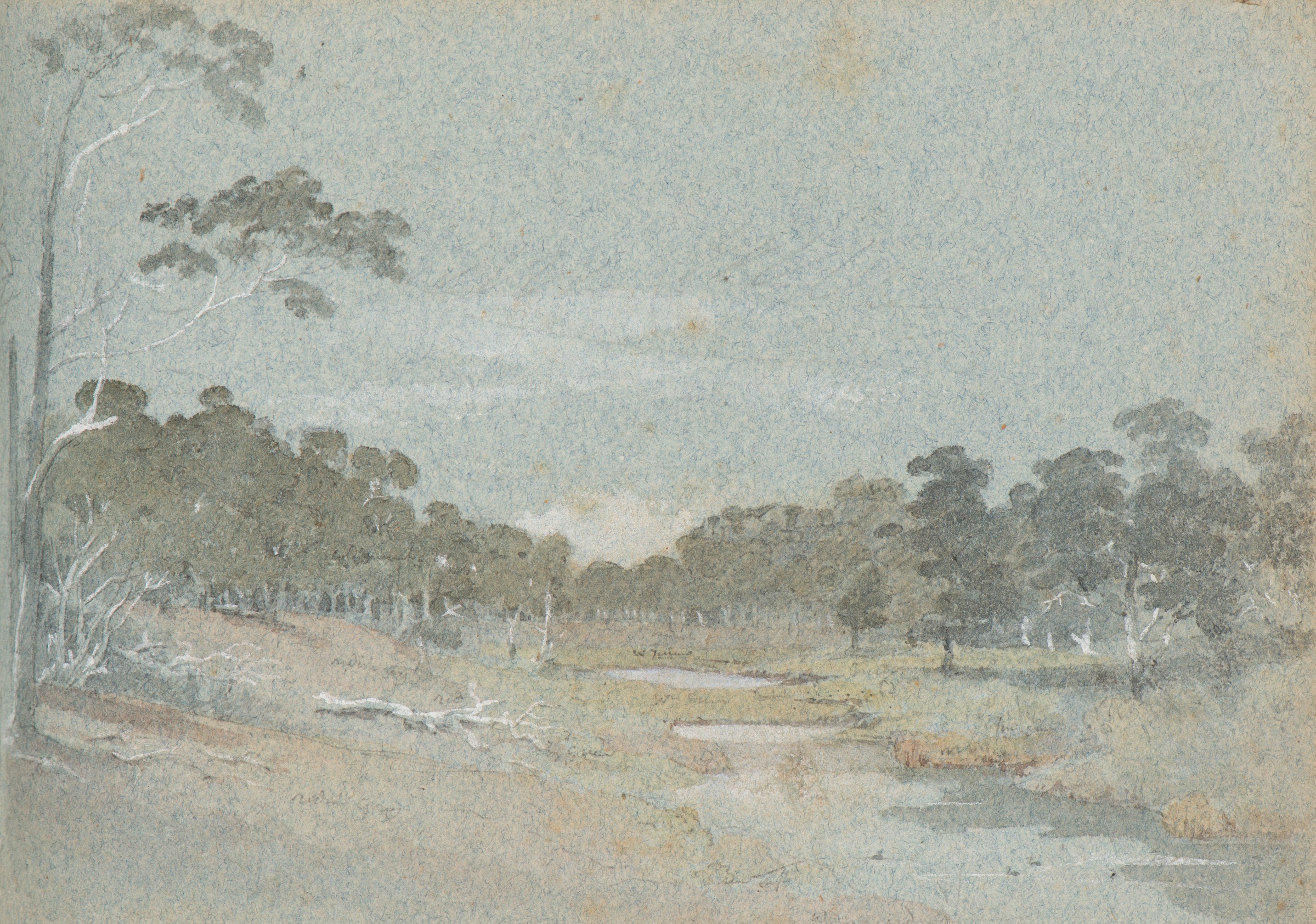
Sir Thomas Mitchell sketchbook - Careel Bay 1828 (flat area leading north towards; where present day Careel Creek is) - Item c03082_0024_m, courtesy State Library of NSW
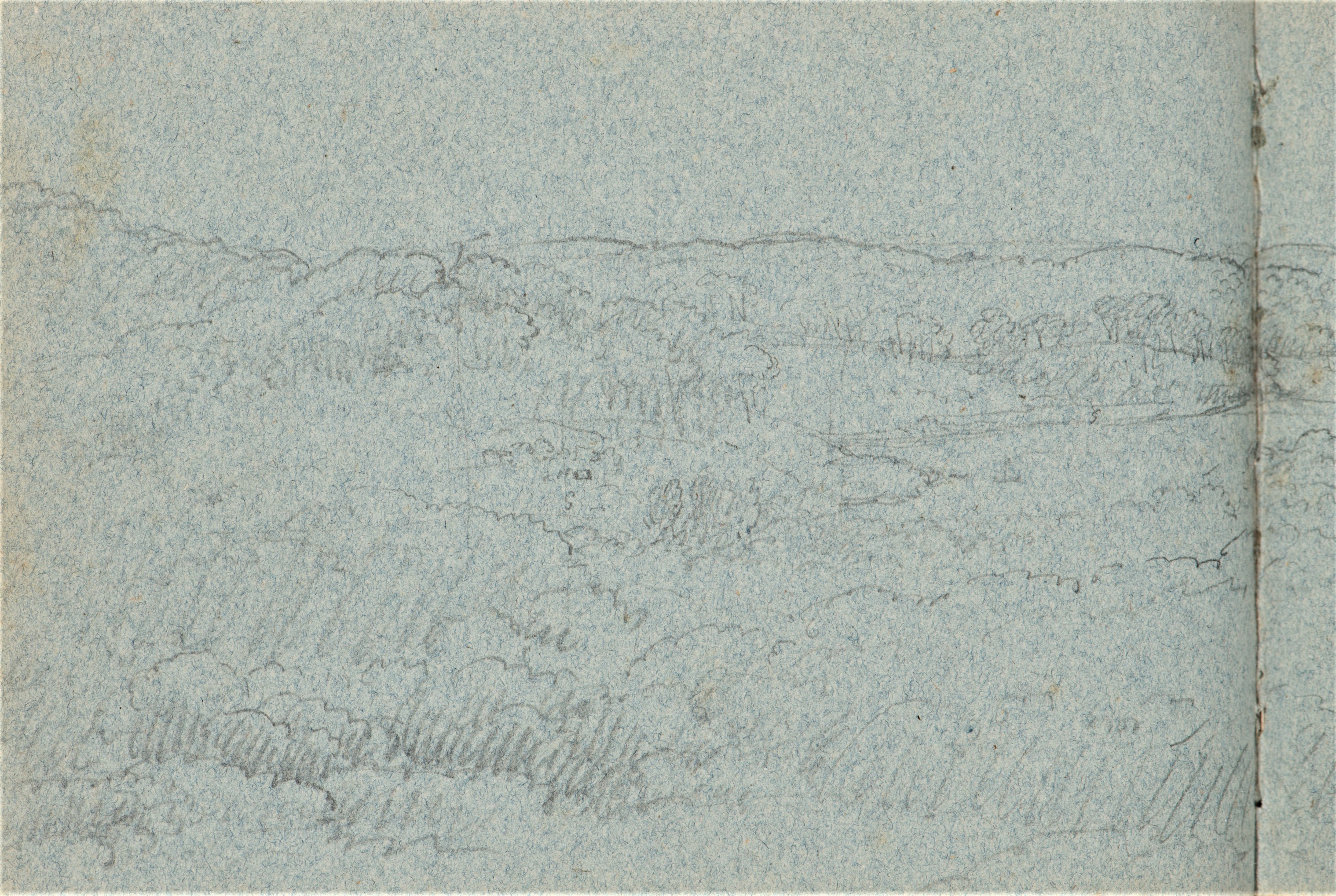
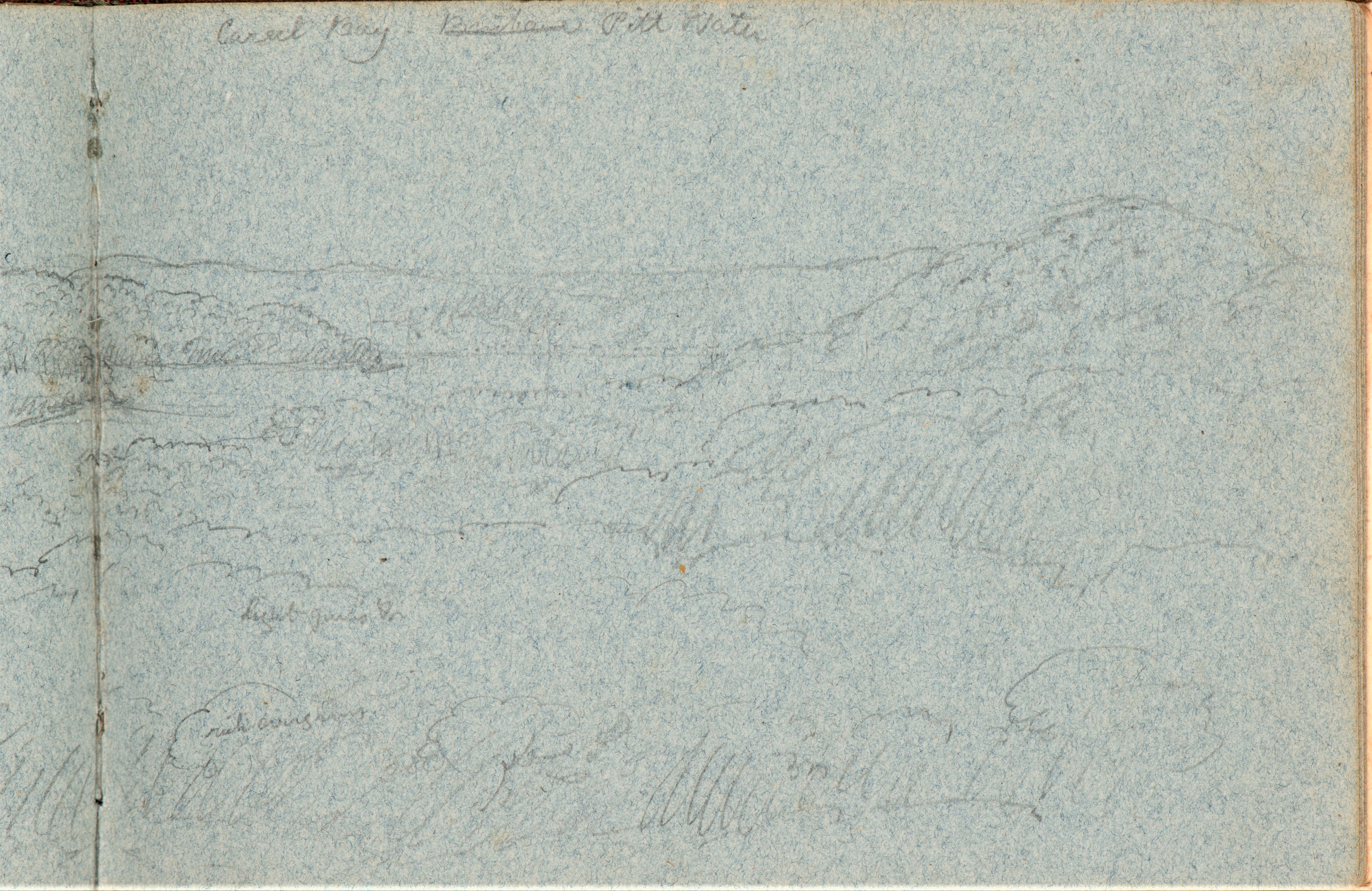
Careel Bay, by Sir Thomas Mitchell, 1828 Field and Sketchbook, Items c03082_0015_m and c03082_0016_m, courtesy State Library of NSW

Misnamed one – is named 'Whale Beach' and actually Palm Beach
EB Studios (Sydney, N.S.W.). (circa 1917). Panorama of Whale Beach, New South Wales Retrieved from http://nla.gov.au/nla.obj-162483691 - view from further back along Sunrise road back towards beach road with Pacific road going up the hill – says ‘Palm Beach No.: 5’ at left hand base of pano. Part of those commissioned by Barrenjoey Land Company - possibly taken around same time those for Whale Beach panoramas and subdivision pamphlets were taken. Palm Beach Land Company cottage sold to Robson Scott on corner of Palm Beach Road and Pacific road opposite what would become stone Maitland home. Peters home still not present on beach, only Chorleys, so certainly circa 1917, possibly 1915-16.
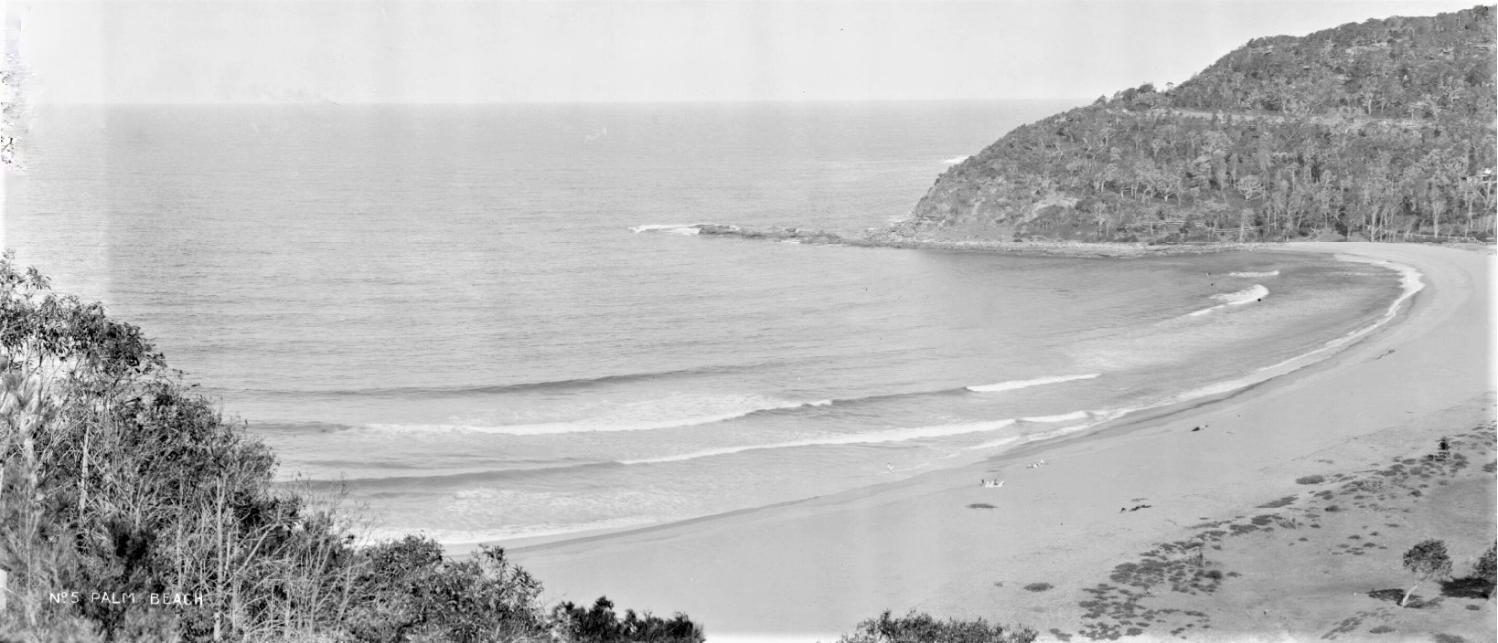
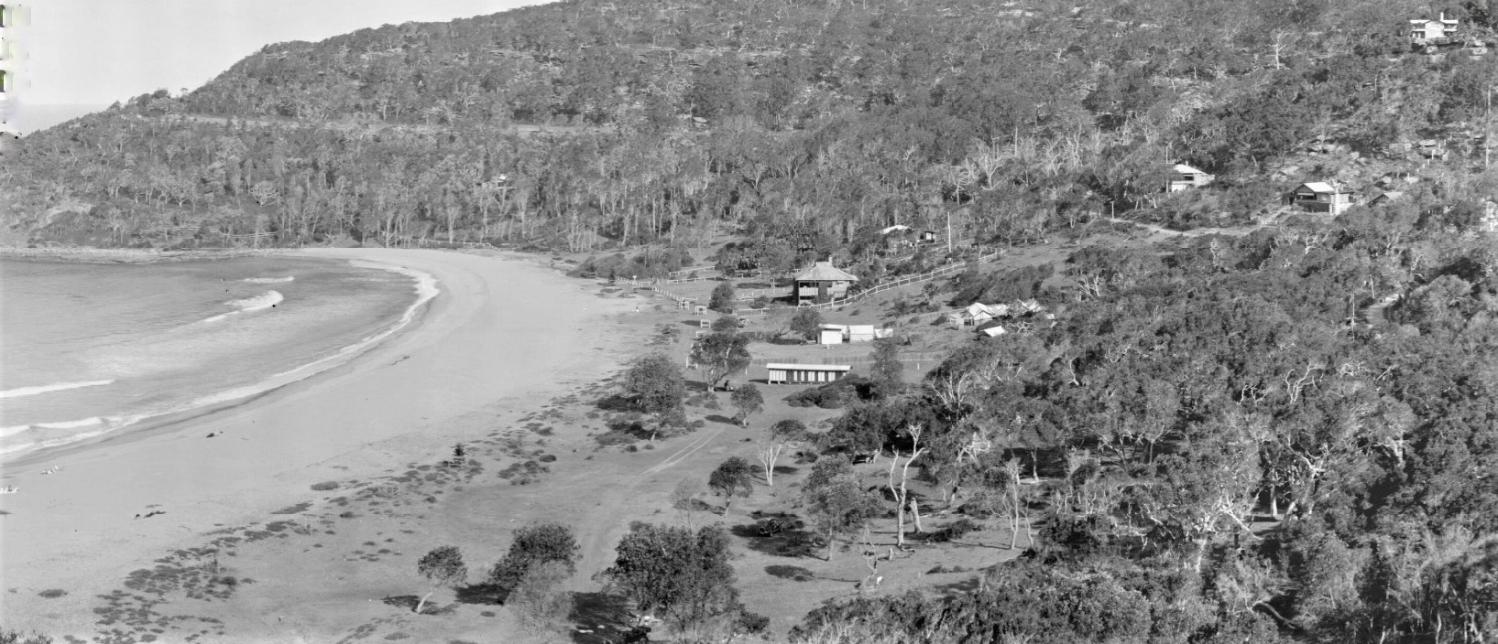
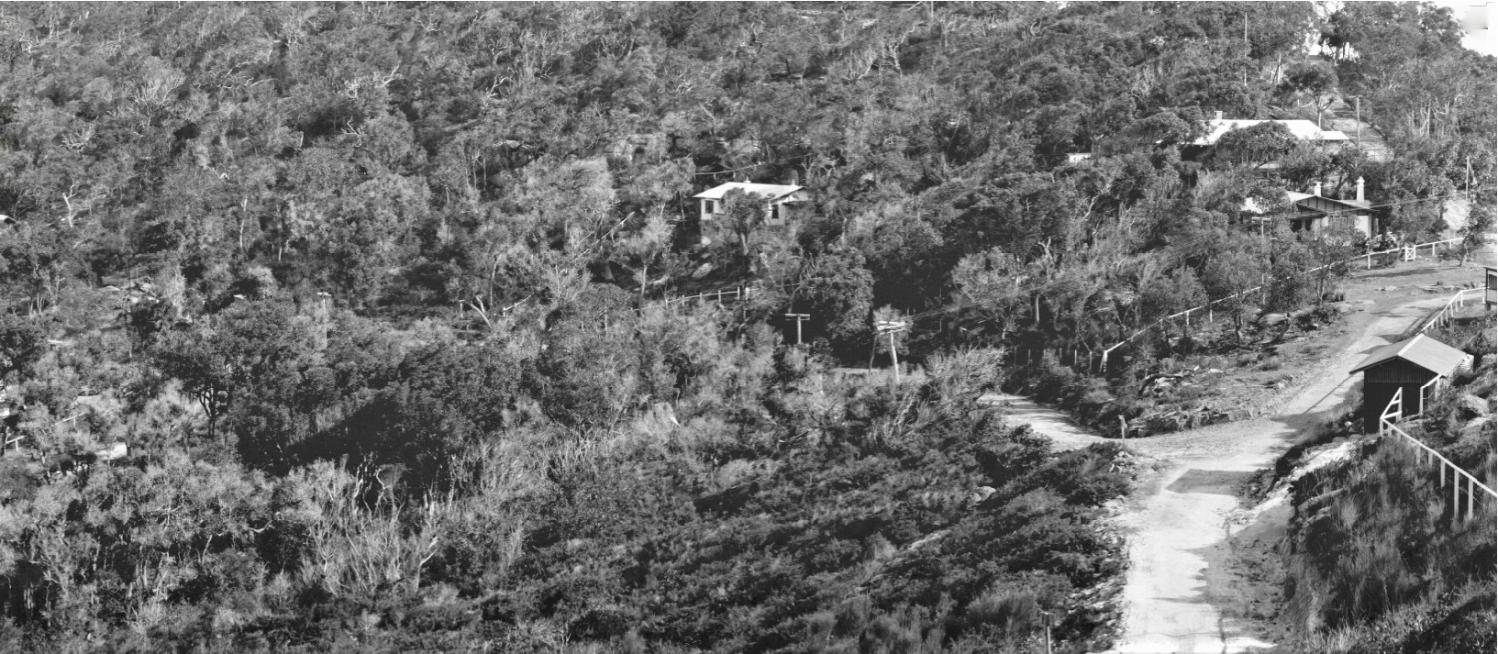
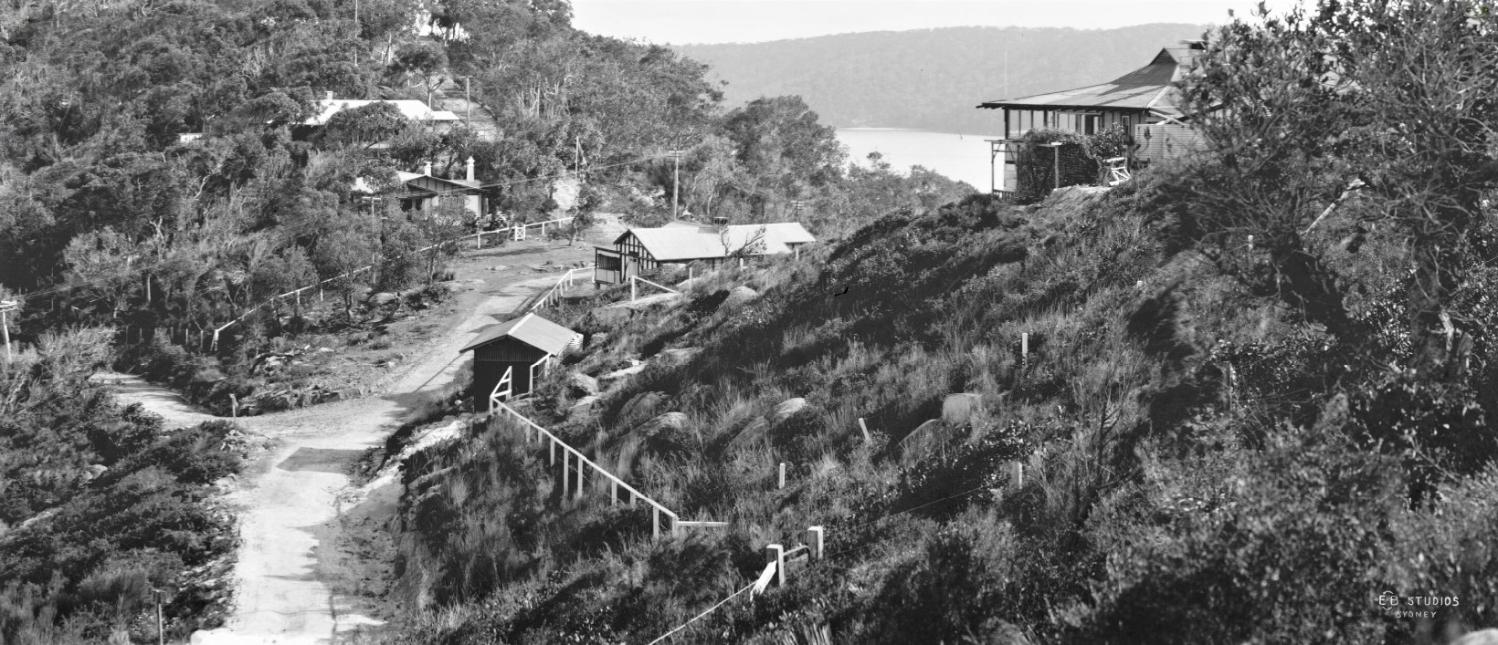
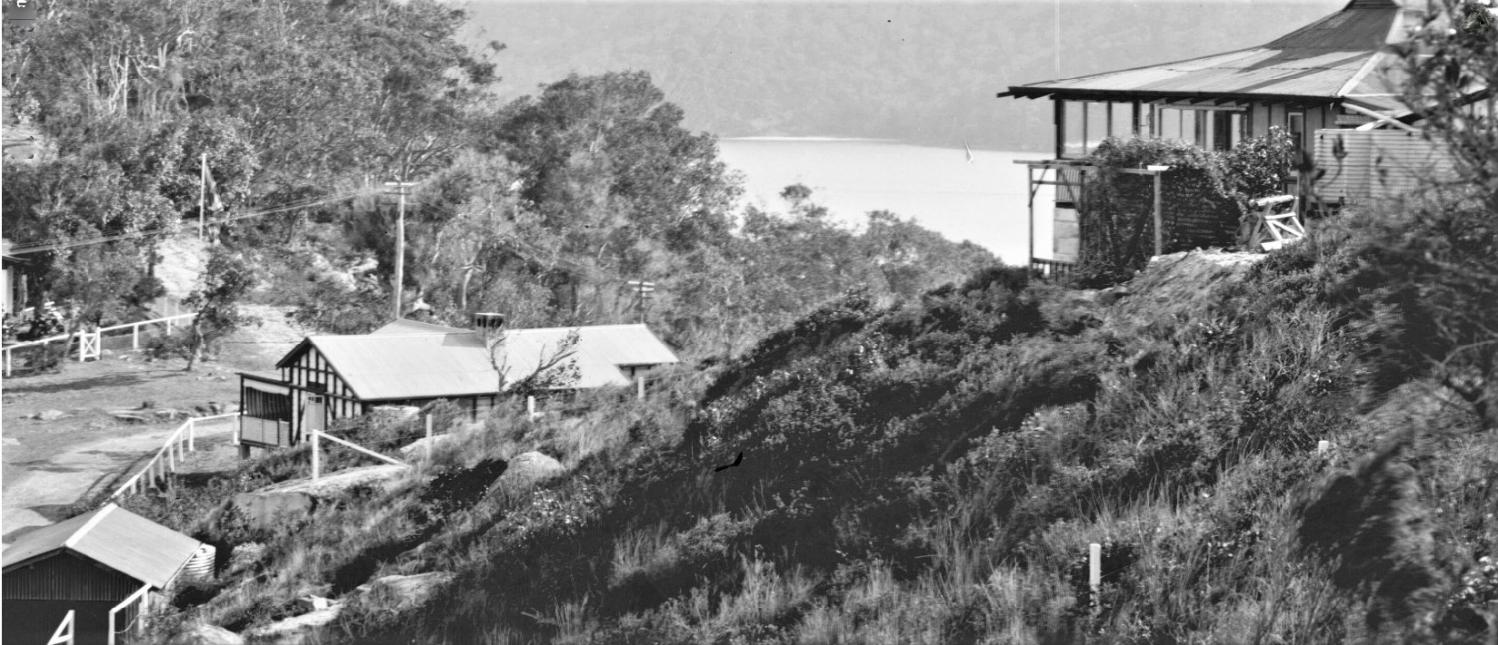
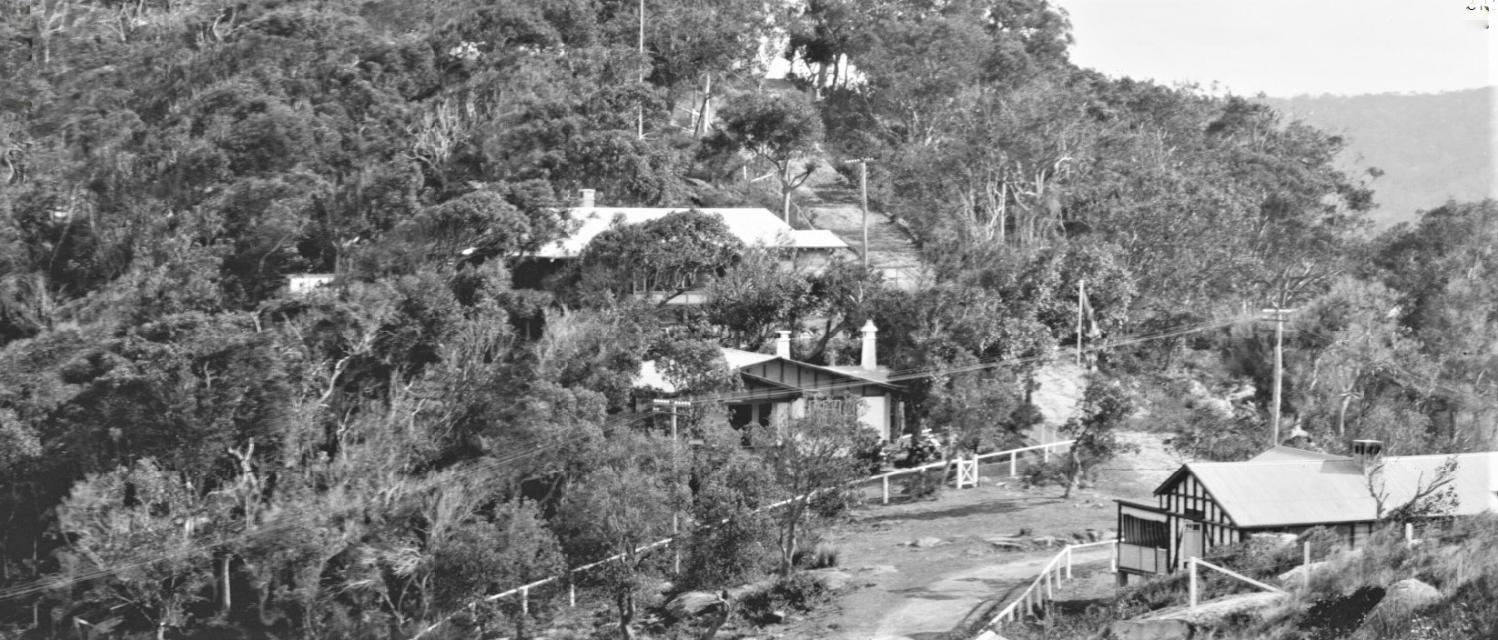
Hordern Park Palm Beach: Some History - threads collected and collated by A J Guesdon, 2024